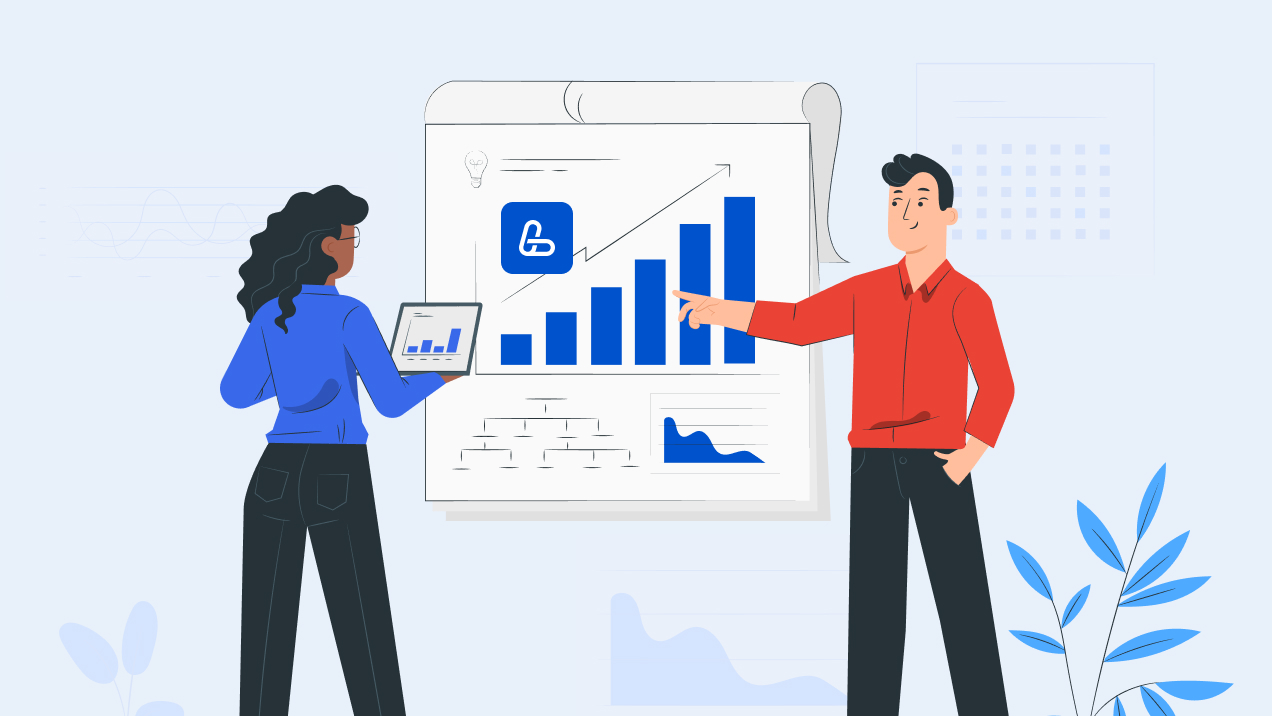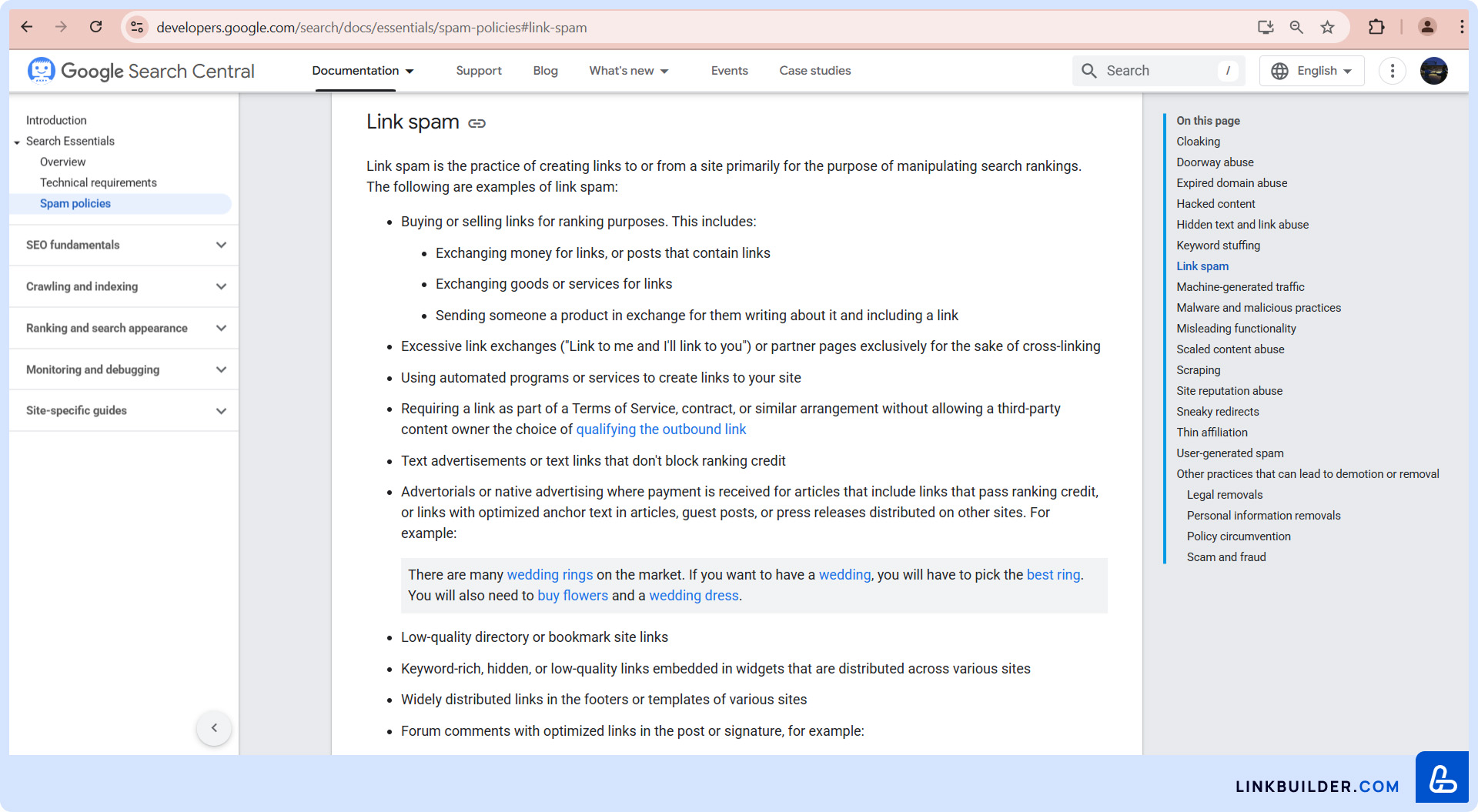Backlinks remain a key factor in SEO success, playing a crucial role in how search engines assess and rank websites. In 2026, as competition for online visibility intensifies, understanding how to buy high-quality backlinks while avoiding any potential risks is more vital than ever.
While organic backlinks remain the gold standard, purchasing high-quality backlinks can be viable if done correctly. This guide provides expert insights into buying backlinks safely and effectively, helping boost your website’s ranking without violating search engine guidelines.
In this article, we will explore the best strategies for purchasing high-quality backlinks, ensuring that your website complies with search engine guidelines while gaining a competitive edge. We’ll cover the key characteristics of a valuable backlink, how to evaluate where to buy backlinks, and more.
By following our best practices, you can enhance your website’s authority, improve search engine rankings, and drive targeted traffic while minimizing the risks associated with improper backlink acquisition. Whether you’re a business owner, digital marketer, or website administrator, understanding how to invest in backlinks wisely can significantly impact your online success.
Understanding Backlinks: The Foundation of SEO
What Are Backlinks?
Understanding backlinks and their role in SEO is essential for anyone looking to enhance their website's online presence.
Backlinks, also known as inbound or incoming links, are hyperlinks from one website to another. They act as digital votes of confidence, signaling to search engines that the linked content is valuable, credible, and authoritative. In the SEO (Search Engine Optimization) world, backlinks are crucial in determining a website's ranking on search engine results pages (SERPs).
When a reputable website links to your content, search engines view it as an endorsement of your site's quality and relevance.
- For example:
A well-known news platform includes a link to your blog post; Google and other search engines recognize this as a positive signal, which can improve your website’s authority and visibility.
Pro Tip: Not all backlinks carry the same weight. Links from high-authority, niche-relevant websites tend to have a more significant impact on rankings than links from low-quality or unrelated sites.
Why Are Quality Backlinks Important?
The quality, quantity, and diversity of backlinks influence how search engines evaluate your website. Earning high-quality, relevant backlinks should be a top priority for any website owner or digital marketer.
Strong backlinks serve as digital endorsements, signaling to search engines that your content is trustworthy and valuable. Just take a look and see for yourself:
- Higher Search Engine Rankings
Google and other search engines view backlinks as votes of confidence. The more high-quality links pointing to your site, the better its chances of ranking higher in search results. When a website with strong authority links to your content, search engines assume that your site also provides valuable information, thus pushing it higher in rankings.
Additionally, backlinks from niche-relevant websites carry even more weight. For example, a backlink from a high-authority tech blog to a software development site is more beneficial than a generic link from an unrelated site. Ensuring your backlinks come from relevant, authoritative sources is key to securing top positions in search results.
- Increased Website Traffic
Backlinks not only improve rankings but also bring in direct referral traffic. When authoritative websites link to your content, their audience is likelier to visit your site, increasing potential engagement and lead conversions. A backlink from a high-traffic website can send thousands of visitors your way, significantly boosting brand awareness and user interaction.
Moreover, referral traffic from backlinks tends to be highly targeted. If your site is linked from an industry-related blog or news article, the visitors coming through that link are already interested in your niche. It results in better engagement rates, lower bounce rates, and increased chances of converting visitors into loyal customers.
- Enhanced Domain Authority
A strong backlink profile contributes to a higher domain authority (DA), which helps search engines determine your site's credibility. Websites with a high DA are more likely to rank well in search results. Thus, as your domain authority increases, your website is more likely to rank for competitive keywords, making it easier to attract organic traffic.
Additionally, a high DA builds trust with users, as people are likelier to trust and engage with a website that appears frequently in search results and has authoritative endorsements.
- Time-Saving
Building backlinks naturally requires significant effort, from reaching out to website owners to writing guest posts.
Investing in high-quality backlinks allows you to speed up the process and allocate your time to other essential SEO tasks, such as content optimization, technical improvements, and user experience enhancements. However, choosing ethical vendors and avoiding spammy or low-quality links that could lead to wasted investments is crucial.
- Long-Term SEO Benefits
Search engines favor sites with solid backlink profiles, helping you maintain a competitive edge over time. Unlike short-term SEO tactics that might yield quick but unsustainable results, a well-structured backlink strategy continues to drive traffic and improve rankings for years.
Furthermore, as your website accumulates high-quality backlinks, it becomes a trusted resource within your industry. It not only strengthens your organic search performance but also opens the door to more natural link-building opportunities, where other websites link to your content without any outreach efforts on your part.
- Competitive Advantage
In highly competitive niches, backlinks can be the decisive factor in outranking competitors. A strong backlink strategy helps level the playing field and gives you an edge in search results.
When competitors have well-established backlink profiles, it can be challenging to rank above them without acquiring authoritative backlinks yourself. By strategically acquiring high-quality links, you can match and potentially surpass your competition.
Search engine crawlers discover and index web pages more quickly when they have links from established sites. For businesses launching new websites or publishing fresh content, backlinks can be especially beneficial for gaining visibility.
Types of Backlinks: Good vs. Bad
Not all backlinks are beneficial for your website’s SEO. Understanding the difference between good and bad backlinks is crucial for building a strong and sustainable backlink profile. Check out the table below for key insights before buying backlinks for your website.
| Good Backlinks ✅ | Bad Backlinks ❌ |
|---|---|
| Come from authoritative, high-domain-rating (DR) websites | Come from spammy, low-quality, or irrelevant sites |
| Are contextually relevant to your niche and naturally fit the content | Are from unrelated or low-relevance sites, providing no value |
| Use natural and diverse anchor text, blending seamlessly into the content | Overuse exact-match keywords, making the link profile look unnatural and manipulative |
| Are embedded within high-quality, well-written, and informative content | Placed in outdated link directories, auto-generated content, or on pages with no editorial oversight, offering little to no value to users |
| Earned through guest posts, partnerships, digital PR, genuine brand mentions, and other ethical tactics | Obtained through link farms, automated bots, low-quality private blog networks (PBNs), or other black-hat schemes |
| Can bring high targeted traffic from reputable sources, increasing engagement and conversions | Rarely generate meaningful traffic and often have high bounce rates |
| Strengthen domain authority, improve rankings, and contribute to long-term SEO success | May not improve rankings and could be ignored by Google's algorithms altogether, offering no SEO benefit |
| Provide lasting SEO benefits as they come from credible sources | Are often removed or devalued by search engines once detected as manipulative |
Why Do Good Backlinks Matter?
Good backlinks signal to search engines that your content is valuable, credible, and worth ranking higher. They help improve your domain authority, drive targeted traffic, and enhance your website’s reputation in your industry.
The more high-quality, relevant backlinks your website has, the stronger its online presence will be.
How Bad Backlinks Can Harm Your SEO?
Bad backlinks can be ignored by search engine’s algorithms, offering no SEO value for your website.
Google’s algorithm is designed to detect manipulative link-building practices. Websites with spammy backlink profiles risk being flagged, losing rankings, or even getting deindexed. Maintaining a sound SEO strategy requires removing or disavowing harmful links.
Should You Buy Backlinks in 2026?
The debate over whether to buy backlinks for SEO remains a hot topic.
On the one hand, high-quality backlinks from authoritative websites can significantly boost your site’s authority, improve search rankings, and drive valuable organic traffic. On the other hand, purchasing backlinks comes with serious risks, as Google’s algorithms have become more sophisticated in detecting and penalizing manipulative link-building tactics.
A wrong approach can lead to ranking drops or even manual penalties.
Read the following and explore the factors that will help you make an informed decision about whether buying links is a viable strategy for your website in 2026.
Google's Stance on Buying Links
Google has clarified its position on purchasing backlinks, which is strictly prohibited. Buying links for SEO is a direct example of an artificial method of obtaining backlinks, which the search engine does not support. According to Google Search Central, formerly Google Webmasters Guidelines, purchasing or selling links to influence search rankings is considered a link scheme, which is against Google's rules.
Google states:
“Our spam policies help protect users and improve the quality of Search results. To be eligible to appear in Google web search results (web pages, images, videos, news content or other material that Google finds from across the web), content shouldn't violate Google Search's overall policies or the spam policies listed on this page. [...] Sites that violate our policies may rank lower in results or not appear in results at all.”
Google's enforcement approach has evolved over the years. Search engines, particularly Google, continuously refine their algorithms to detect and penalize manipulative link-building tactics. For this reason, website owners and digital marketers need to buy SEO backlinks ethically and strategically.
Rather than outright penalizing websites for questionable backlinks, its algorithm now focuses on diminishing the value of links that seem part of a link scheme. It means that low-quality or paid backlinks may no longer be able to boost rankings. However, websites that actively buy back links or are involved in large-scale link schemes can still face manual penalties, which can lead to ranking drops or even deindexing.
While Google discourages the purchase of links, some companies still find ways to work within these restrictions. Despite the guidelines, backlink trading remains a common practice in the SEO industry. Businesses and SEO professionals continue to invest in paid backlinks while taking measures to ensure their links appear natural and are acquired from reputable sources.
For example, businesses can hire SEO experts or agencies with expertise in outreach, guest posting, and content collaboration. When done correctly, these practices result in high-quality backlinks that appear earned organically rather than bought. Google prefers this method because it contributes to valuable content creation and improves the internet.
The Risks and Rewards of Purchasing Backlinks

Risks of Buying Backlinks:
- Ranking Drops – If Google identifies purchased backlinks as part of a link scheme, it can pay no attention to them, making those links absolutely useless for your SEO efforts.
- Wasted Money on Low-Quality or Ineffective Links – Backlinks from spammy, irrelevant, or low-authority websites have little to no SEO benefit and may even be ignored by search engines.
- Damage to Your Website’s Credibility and Trustworthiness – A weak or unnatural backlink profile may make your site look untrustworthy to users and search engines, lowering engagement and conversions.
- Short-Term Gains, Long-Term Consequences – Although paid links can deliver quick ranking improvements, Google's frequent algorithm changes can cause sharp ranking losses if those links get devalued.
- Legal and Ethical Concerns – Some industries, such as finance, healthcare, and gambling, have strict regulations regarding advertising and SEO practices. Using manipulative backlink strategies could lead to legal issues or harm your brand's reputation.
- Difficult Recovery from a Penalty – If your website receives a manual action from Google, it can take months to recover rankings, requiring extensive backlink audits and reconsideration requests.
Rewards of Buying Backlinks:
- Faster Ranking Improvements for Competitive Keywords – In highly competitive niches, buying quality links can accelerate ranking improvements, helping websites reach top positions faster.
- Increased Referral Traffic and Brand Exposure – Backlinks from high-traffic, high-authority sites drive direct traffic, improving brand awareness and potential customer acquisition.
- A Stronger Backlink Profile When Done Correctly – Strategically purchasing high-quality, relevant backlinks can enhance your site’s overall authority and trustworthiness.
- Better Indexing of New Content – High-quality backlinks increase visibility by facilitating faster discovery and indexing of your new pages by search engine crawlers.
- Competitive Advantage Over Rivals – If competitors have solid backlink profiles, purchasing well-placed, high-quality links can help level the playing field and improve your rankings.
- Diverse Link Sources – Buying backlinks from reputable vendors allows for greater control over link diversity, ensuring a natural mix of anchor texts and domains.
Ethical vs. Unethical Link-Building Practices
Backlinks remain a cornerstone of SEO, but how they are acquired significantly affects long-term success. Ethical link-building practices, often called white hat SEO, align with search engine guidelines and help build sustainable rankings. Black hat SEO is a term for unethical SEO strategies that use manipulative techniques that can lead to penalties and ranking losses.
Understanding the difference between ethical and unethical link-building and how to purchase high quality backlinks is essential for maintaining a strong and credible online presence.
- Ethical (White Hat) Link-Building Practices
Sponsored Guest Posts: Writing high-quality, relevant guest posts for authoritative websites allows businesses to acquire backlinks naturally. Sponsored guest posts follow transparent guidelines and provide valuable content rather than merely inserting links.
Influencer Collaborations: When collaborating with industry influencers, you can get organic backlinks from their mentions and links to your content. These partnerships build credibility while driving traffic from engaged audiences.
Digital PR Campaigns: High-quality press releases and outreach efforts can help websites earn links from reputable news sources, industry blogs, and authoritative websites. A well-crafted PR campaign increases brand visibility while naturally attracting backlinks.
Content Marketing & Link-Worthy Resources: Creating valuable resources such as research reports, infographics, or interactive tools encourages organic backlinks from websites that find your content valuable. Well-researched, engaging content is one of the most sustainable ways to earn links over time.
Broken Link Building: Identifying broken links on relevant websites and offering your content as a replacement is an ethical way of acquiring backlinks while helping website owners deliver a quality user experience.
- Unethical (Black Hat) Link-Building Practices
Link Farms: Websites created solely to sell or exchange links without offering real value can lead to severe Google penalties. These low-quality networks are often flagged and deindexed by search engines.
Automated Links: Using software to generate thousands of backlinks across unrelated or spammy websites can appear unnatural and manipulative. Search engines quickly recognize these patterns and may penalize sites that engage in such tactics.
Hidden Link Schemes: Placing hidden links into a website's code or using deceptive tactics to insert links without user awareness violates search engine guidelines. Google actively detects and devalues such links.
Excessive Exact-Match Anchor Text: Overloading backlinks with keyword-rich anchor text instead of natural, varied phrasing can raise red flags for search engines, making your link profile appear unnatural.
Why Ethical Link-Building Matters?
Staying on the right side of SEO guidelines ensures long-term success and stability in search rankings.
White-hat link-building strategies create sustainable growth, while black-hat tactics might offer short-term boosts but come with significant risks, including manual penalties, ranking drops, and even deindexing from search results.
What Metrics Define a High-Quality Backlink?

Not all backlinks contribute equally to a website's SEO success. A high-quality backlink enhances your site's authority, credibility, and search rankings while remaining compliant with search engine guidelines.
To build a solid and natural backlink profile, you must consider multiple factors that determine a link's worth.
1. Authority and Trust Flow
The authority of the linking website is one critical factor when assessing the quality of backlinks. A link from a high-authority domain has more SEO value than one from a spammy or low-authority website.
- Domain Authority (DA): A metric developed by Moz that predicts a website's ability to rank on search engines.
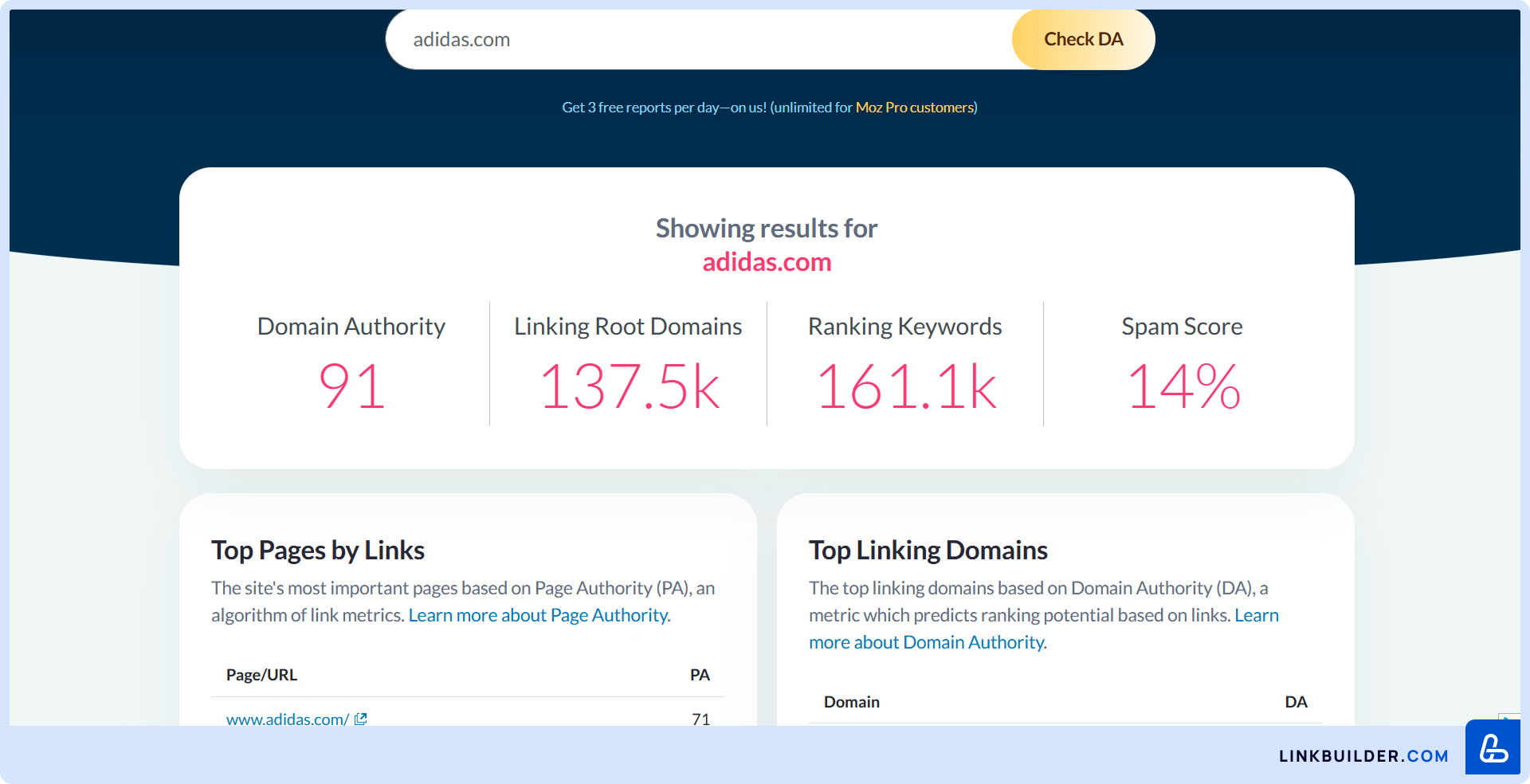
- Trust Flow: A score from Majestic that measures a site's trustworthiness based on the quality of its backlinks.
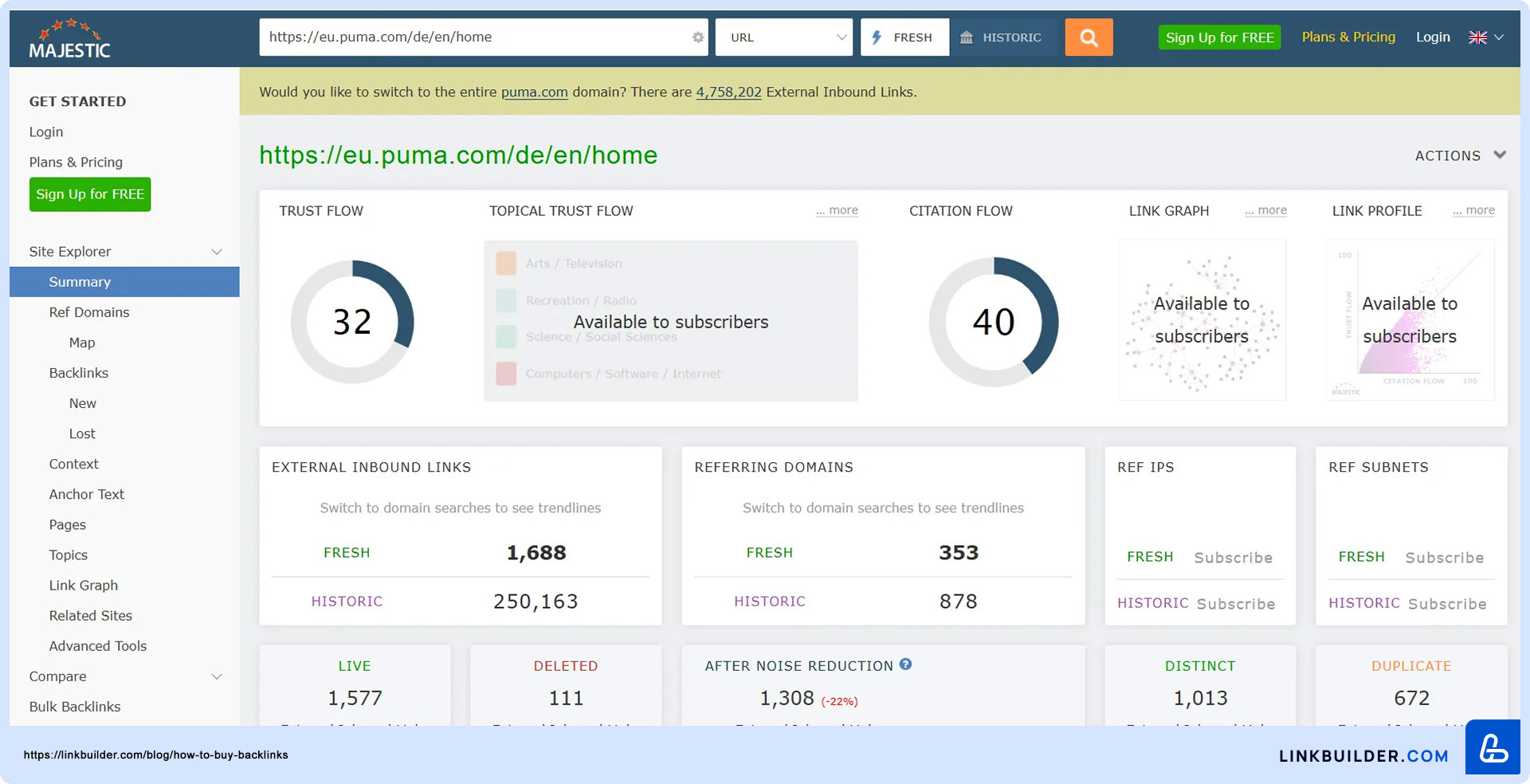
Websites with higher DA and good trust flow pass more link juice to improve your search rankings. Use tools like Ahrefs, Moz, and Majestic to evaluate potential backlink sources.

2. Relevance to Your Niche
Relevance is a major ranking factor in Google's algorithm. A backlink from an industry-related website is significantly more valuable than a link from an unrelated niche.
For instance, if you run a digital marketing blog, a tech, business, or SEO website backlink will hold much more weight than one from a fashion or travel site. Google assesses backlinks' context and topical relevance to ensure they provide real value.
3. Anchor Text Optimization
To prevent over-optimization penalties, a hyperlink's anchor text – the text that can be clicked on – should be diverse and natural. A balanced anchor text strategy includes the following:
- Branded Anchors: "(Your brand name) sports shoes".
- Naked URLs: "https://example.com" (raw URL).
- Generic Anchors: "Click here," "Learn more," or "Read this article."
- Partial Match Keywords: "Best SEO tools for beginners."
Pro Tip: Avoid overusing exact-match keywords (e.g., "best fitness tracker" in every backlink), as this can appear manipulative to search engines.
4. Placement Within Content
Where a backlink appears on a page impacts its value. Editorial backlinks – those placed within the main body of a well-written article – carry more SEO weight than links in sidebars, footers, or low-quality directories.
- Backlinks placed naturally within engaging, relevant content signal credibility to search engines.
- Links in poorly written or low-quality articles (e.g., spammy guest posts) are devalued.
Aim for contextual backlinks or niche edits embedded within valuable, in-depth content for the best SEO benefits.
5. Traffic from the Linking Site
A high-quality backlink improves SEO and drives real traffic to your website. Links from websites with substantial organic traffic and active audiences provide:
- Referral traffic – Direct visitors who click through to your site.
- Better engagement – Increased time on the page, reduced bounce rates, and potential conversions.
Use tools like SimilarWeb and Ahrefs to check a site's estimated traffic before acquiring backlinks.
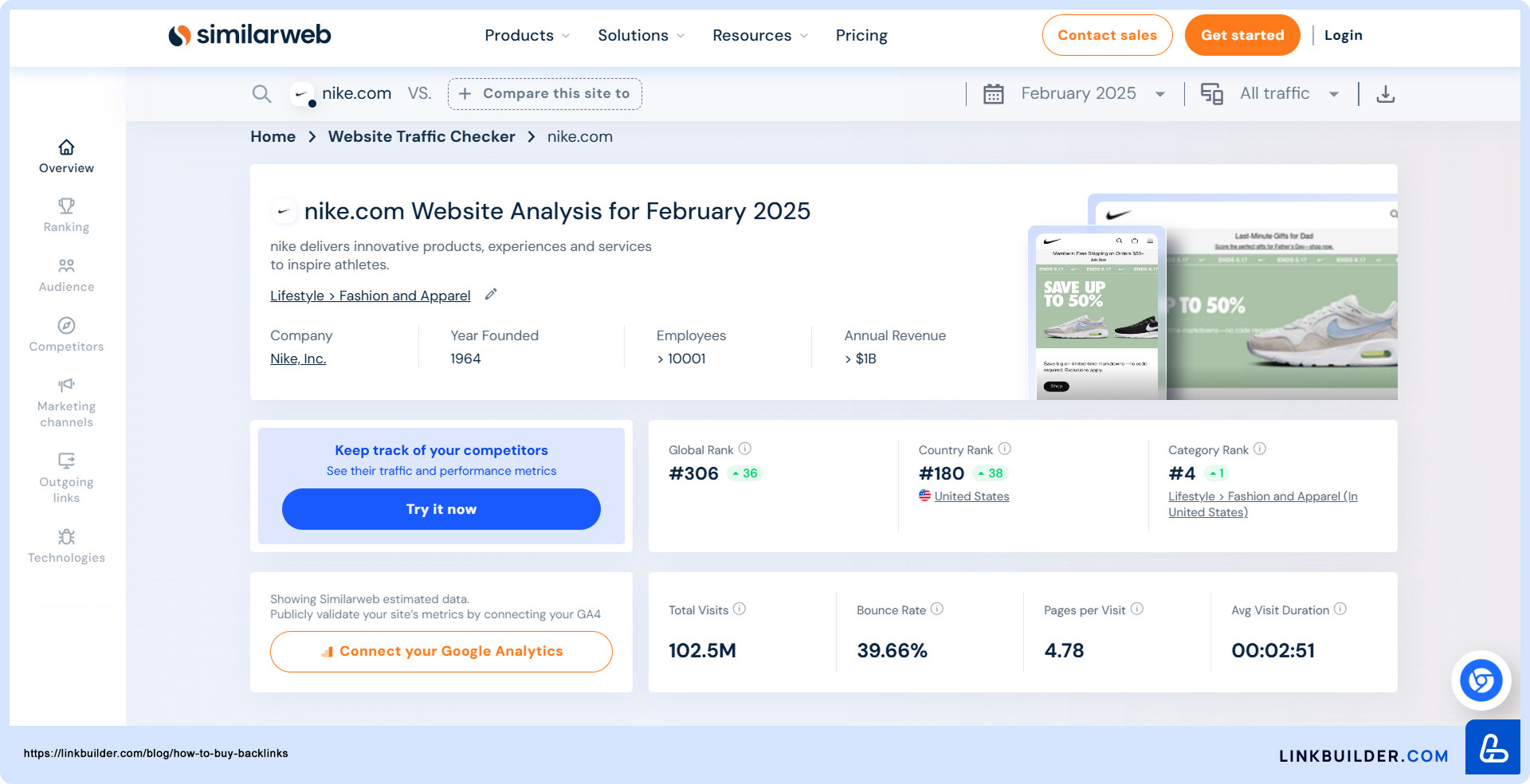
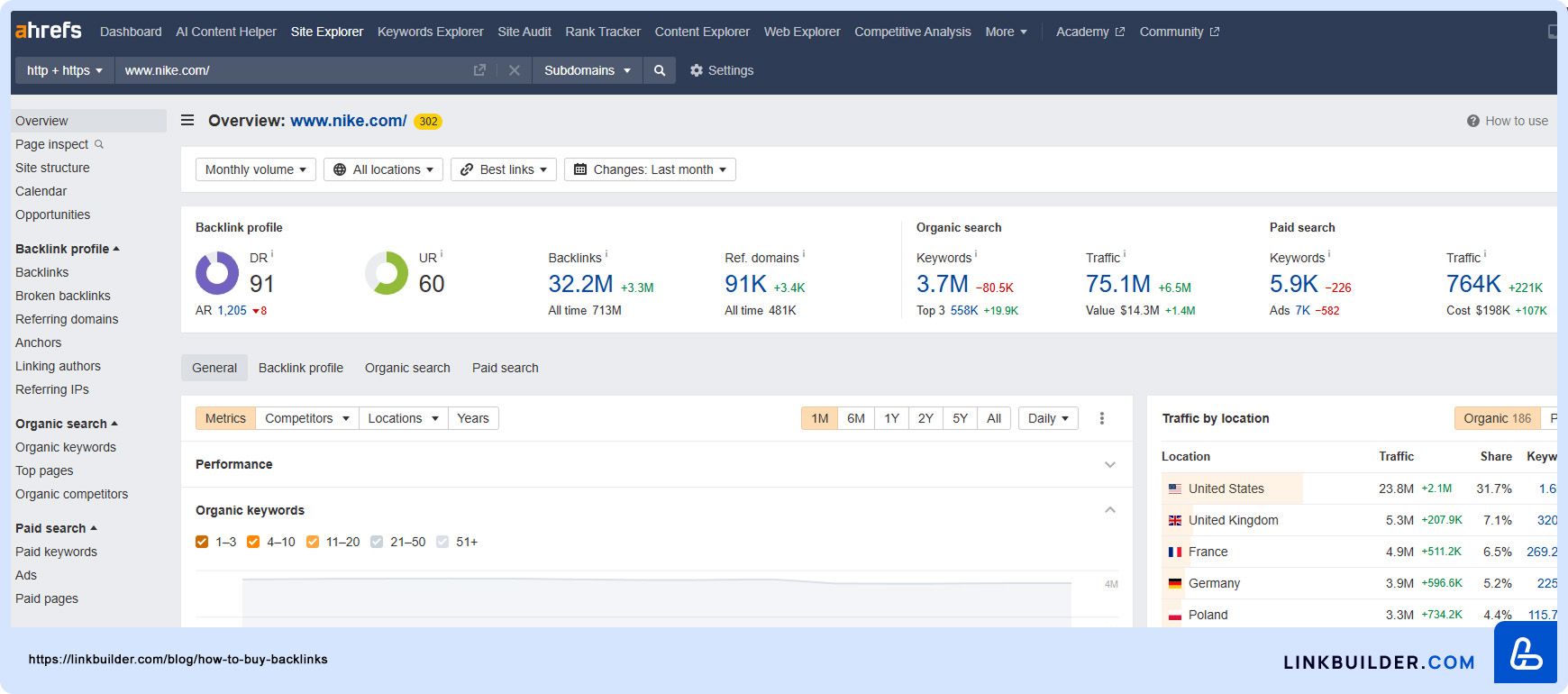
6. Dofollow vs. Nofollow Attributes
Currently, there are four types of link attributes: dofollow, nofollow, sponsored, and UGC. Let's take a closer look at the two primary ones:
- Dofollow links pass SEO value (link equity) and help boost rankings.
- Nofollow links signal search engines not to give ranking credit.
While do-follow backlinks are more valuable for SEO, a natural backlink profile includes both do-follow and no-follow links to avoid manipulation.
7. Diversity of Link Sources
A healthy backlink profile should include links from varied sources rather than relying on a few domains. It includes:
- Guest posts on industry blogs;
- Mentions in news articles and press releases;
- Citations in research studies or whitepapers;
- Links from social media, directories, and forums.
Google values a diverse and natural link profile, making earning backlinks from multiple reputable sources essential.
8. Freshness and Link Velocity
Search engines favor backlinks earned over time rather than obtained all at once.
- Steady link acquisition appears organic and signals consistent growth.
- Sudden backlink spikes (e.g., buying hundreds of links at once) may trigger spam detection.
A natural link velocity – the rate at which you acquire new backlinks – helps maintain long-term SEO stability.
9. Unique Linking Domains
The number of distinct referring domains or other websites that link to you is more important than the overall quantity of backlinks.
100 backlinks from 100 different high-quality sites = Stronger SEO impact.
100 backlinks from the same site = Less valuable due to diminishing returns.
Focus on earning backlinks from diverse authoritative domains rather than multiple links from a single source.
10. Avoiding Spammy and Harmful Links
Low-quality backlinks from spammy, irrelevant, or low-authority sites can harm your website's SEO rather than help it.
- Links from link farms, or automated bots violate Google's guidelines.
- Backlinks from penalized or de-indexed websites can transfer negative SEO signals.
How to Safely Buy Backlinks Without Penalties
As far as we know, backlinks remain an influential ranking factor in SEO in 2026, but buying them carries risks if done incorrectly.
The purpose of search engines' algorithms is to identify and penalize manipulative link-building strategies. Purchasing links the wrong way can lead to ranking drops, manual penalties, or even deindexing. However, buying backlinks from high-quality and relevant sources can improve your rankings and organic traffic when done strategically and ethically.
To avoid penalties while still benefiting from purchased links, follow these tips.
- Vet Link Sellers Thoroughly
Not all backlink providers are trustworthy, and working with the wrong seller can do more harm than good. Before purchasing backlinks, it's essential to carefully vet the vendor to ensure they provide legitimate, high-quality links. Consider the following key factors when vetting link sellers:
Relevance to Your Niche
A backlink is only valuable if it comes from a relevant source. Google prioritizes contextual backlinks, meaning a link from a high-quality, industry-related website will hold significantly more weight than one from an unrelated domain.
Pro Tip: Check whether the website publishes content related to your niche and has an engaged audience interested in your industry.
How to analyze website content, audience engagement, and traffic?
- Assess Content Relevance
Evaluate how well the content of the website aligns with your niche:
- Manually. Review blog sections, categories, and recent publications.
- Content analysis tools:
- SEMrush (Content Analyzer): Identifies key topics and popular articles.
- Ahrefs (Site Explorer → Top Pages): Highlights the most visited pages.
- BuzzSumo: Analyzes trending content by topic.
- Google Search (
site:domain.com "keyword"): Finds relevant articles on the website.
- Measure Audience Engagement
See how active the audience of the website is:
- Social signals (likes, shares, comments):
- BuzzSumo: Displays the number of shares on social media.
- SharedCount: Measures social media engagement.
- Comments: Check if there are discussions under articles (Disqus, built-in comment sections).
- Ahrefs/SEMrush: Evaluate traffic and user behavior (time on site, page depth).
- Analyze Traffic and Audience
- SimilarWeb: Provides insights into audience demographics, traffic sources, and interests.
- Google Analytics (if access is available): Offers in-depth user behavior analysis.
Check Their Reputation
A vendor's credibility ensures you receive high-quality, safe backlinks. Positive client feedback and a track record of successful placements are reliability indicators.
Pro Tip: Look for verified case studies and testimonials on independent platforms like Trustpilot or SEO forums to confirm the vendor's legitimacy.
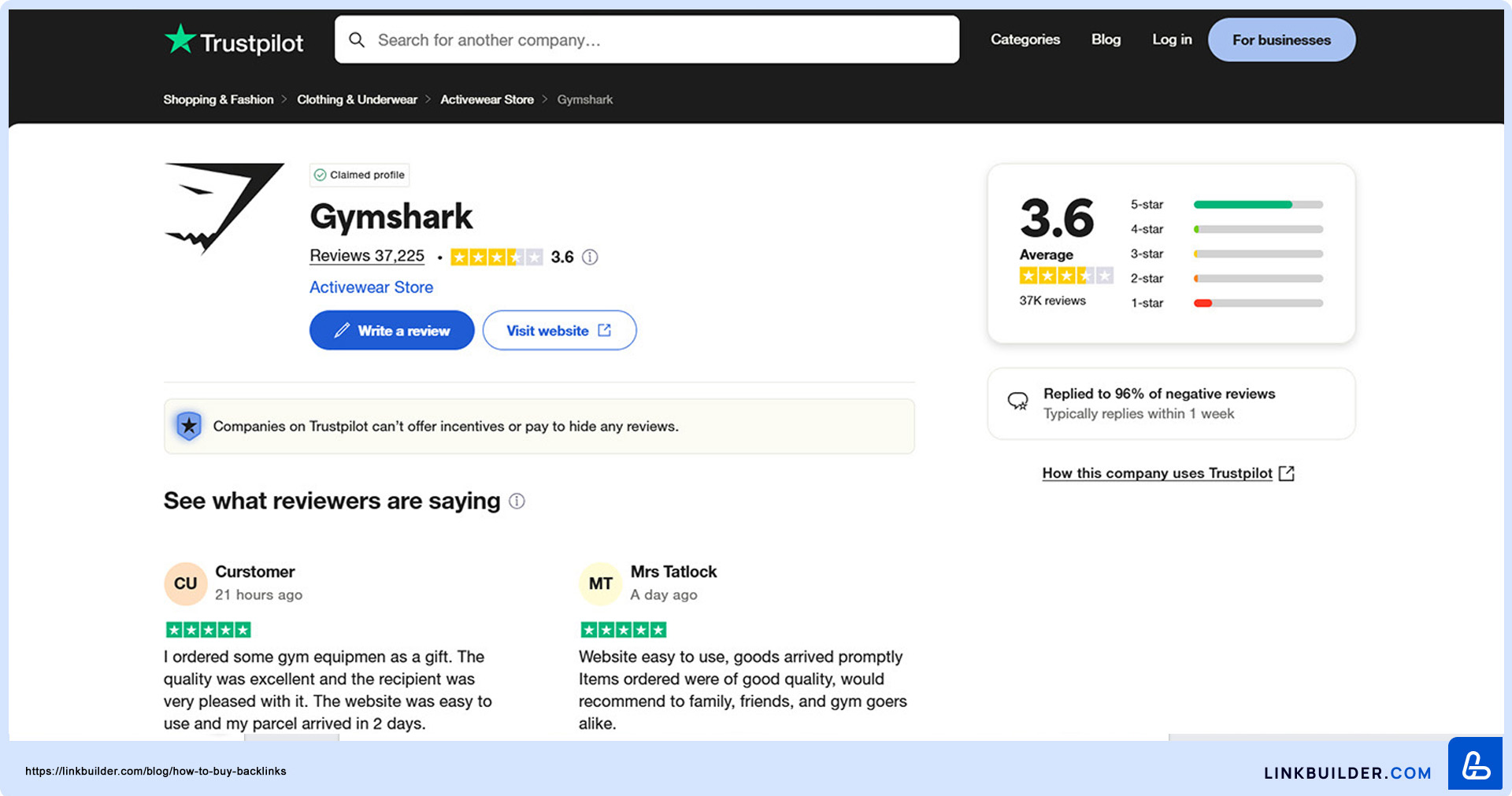
Request Sample Links
Analyzing past backlinks helps determine whether the vendor delivers links from authoritative, relevant sources.
Pro Tip: Use Ahrefs or Moz to check the domain authority and traffic of sample links – avoid sites with low DA or no organic traffic.
Verify Backlink Sources
The quality of the linking websites significantly impacts your SEO. Spammy or irrelevant sources can harm your rankings instead of improving them.
Pro Tip: Ensure the websites are indexed in Google by searching "site:domain.com" – if the site isn't indexed, it may have been penalized.
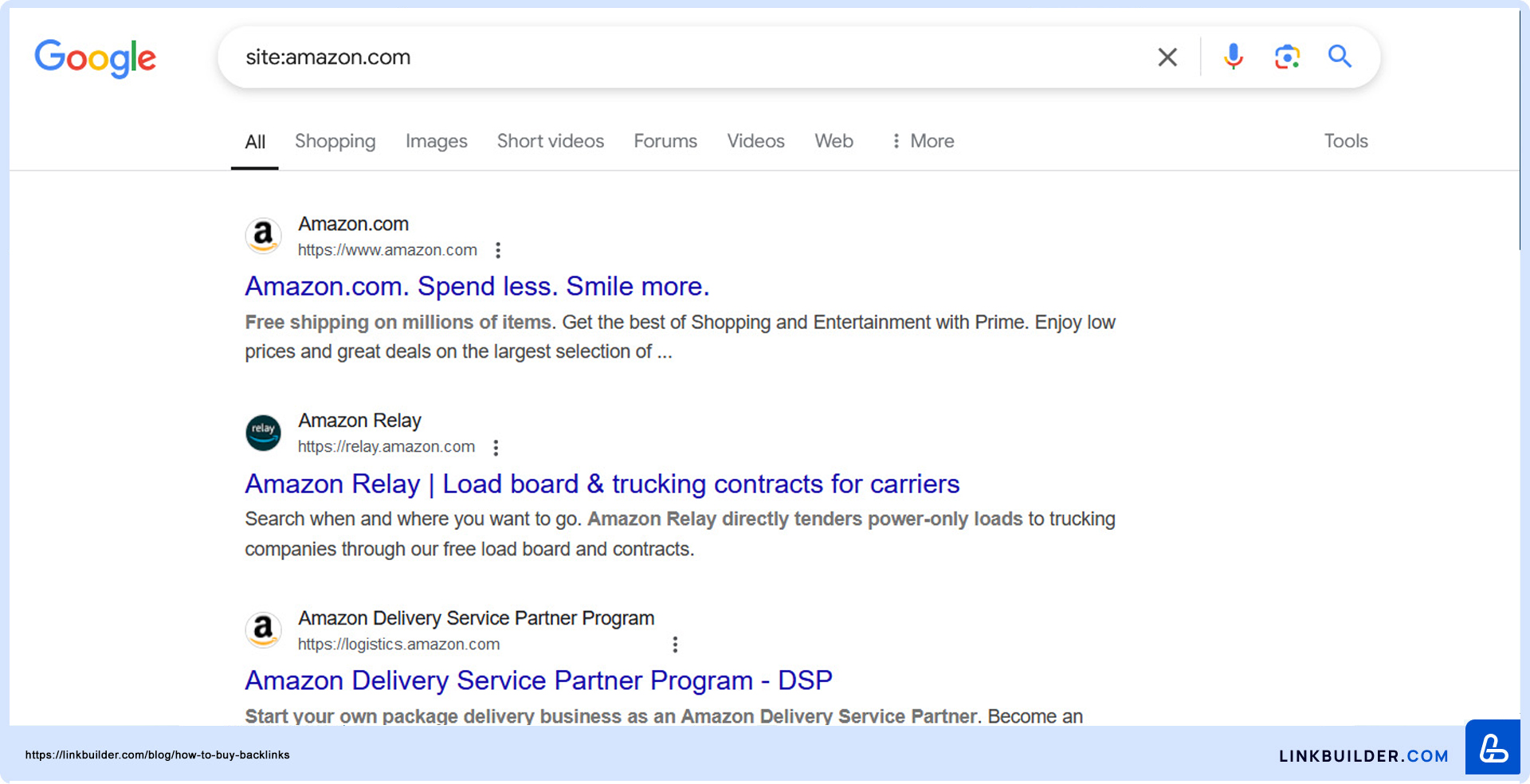
- Check Domain Authority & Trust Metrics
Another essential step in preparing to purchase backlinks for SEO is evaluating the authority and trustworthiness of the website linking to you. The credibility of the linking website plays a considerable role in how much SEO value you receive. Websites with high Domain Authority (DA), Trust Flow (TF), and Page Authority (PA) tend to pass more value than those with weak metrics.
Domain Authority (DA) and Domain Rating (DR):
These metrics (from Moz and Ahrefs) measure a site's overall strength and backlink profile. Higher DA/DR sites pass more SEO value.
Pro Tip: Don't rely solely on DA/DR – analyze the website's traffic sources and engagement levels using tools like Similarweb. A high DA/DR with no organic traffic can indicate a weak or manipulated backlink profile.
Trust Flow (TF), Citation Flow (CF) & Page Authority (PA):
Trust Flow (from Majestic) evaluates a site's credibility based on its backlink sources, while Citation Flow measures its overall link volume. A high Trust Flow to Citation Flow ratio indicates a quality website. A link placed on a high-PA or high-CF page will pass more link equity, improving your SEO efforts.
Pro Tip: Ensure the specific page where your link will be placed has strong metrics and isn't buried under dozens of outbound links.
Organic Traffic:
A good backlink source should receive real, organic traffic. You can use Ahrefs, Semrush, or SimilarWeb to check the site's traffic trends and audience engagement.
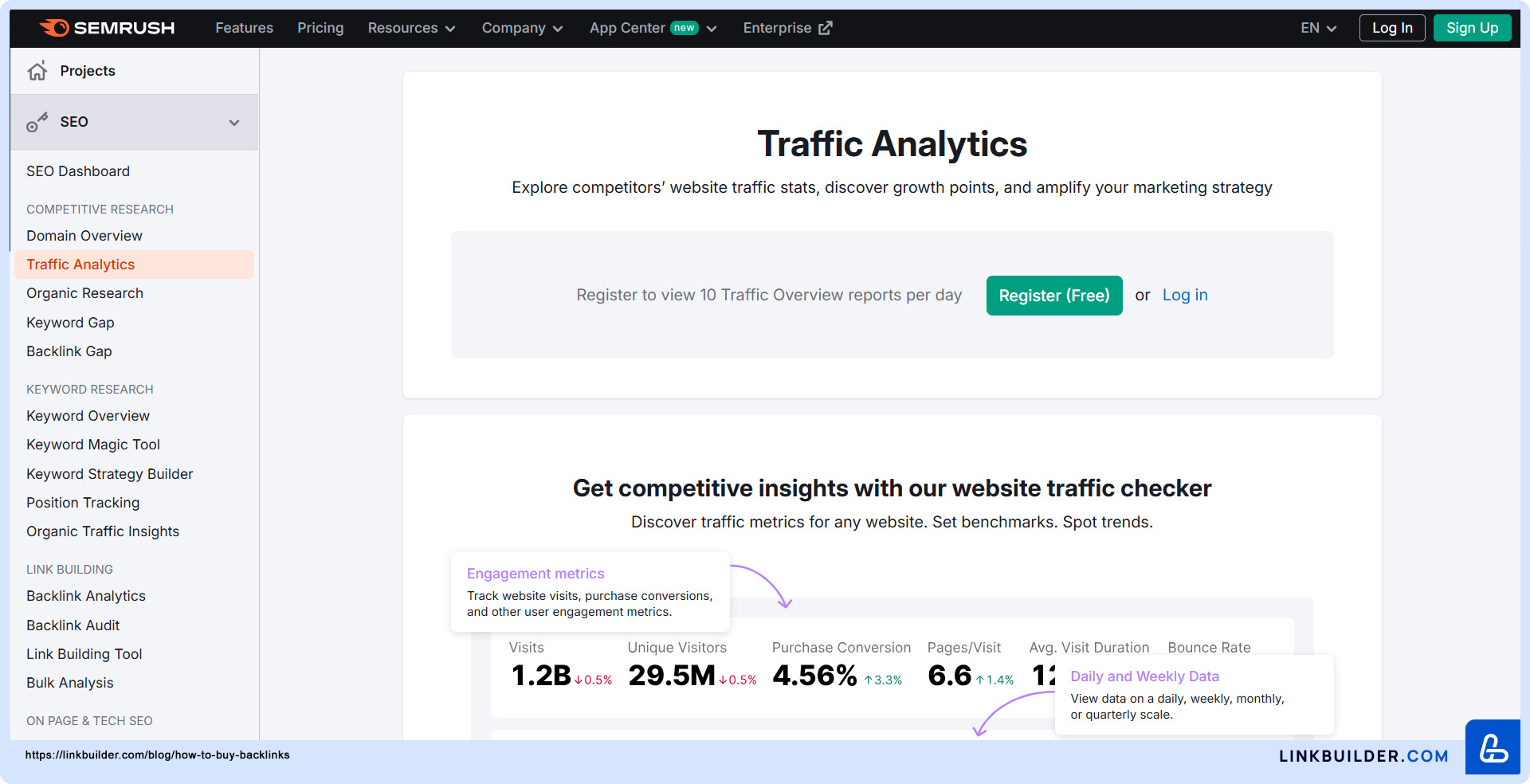
Pro Tip: Use Semrush Traffic Analytics or Ahrefs Organic Traffic Estimator to check a website's monthly visitors and engagement rates. Avoid websites with little to no organic traffic or those that rely on artificial methods to inflate numbers.
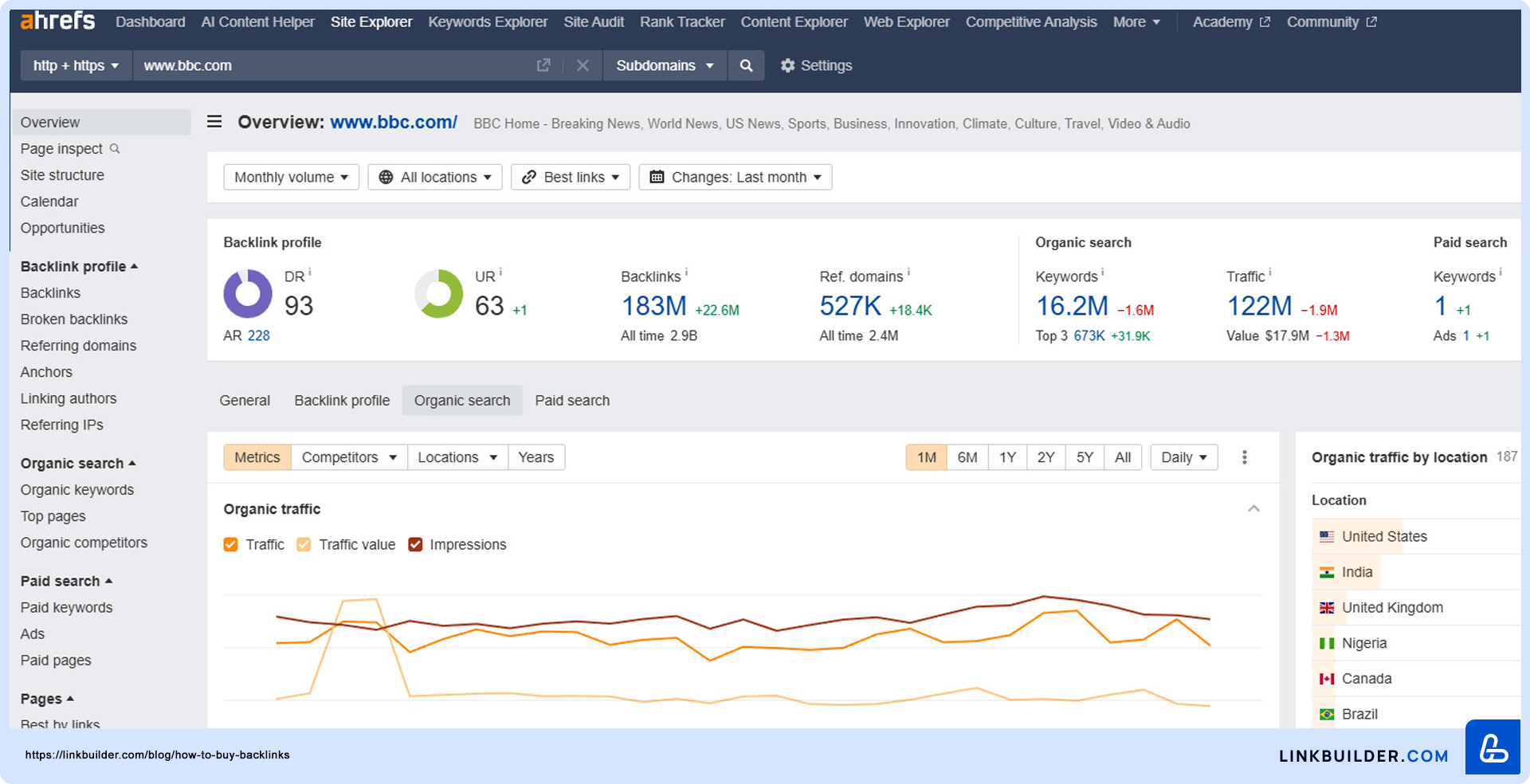
Healthy Link Ratio:
A high-quality website maintains a balanced ratio of inbound and outbound links. Sites that sell too many links or have an unnatural link profile may be flagged by search engines, reducing the effectiveness of purchased links.
Pro Tip: Check the ratio of outbound to inbound links using Ahrefs or Moz. If a website has an excessive number of outgoing links but very few earned backlinks, it may be part of a link-selling network.
Once you know what to look for, you need reliable sources to find trustworthy backlink vendors. Here are three proven tools to identify potential link sellers:
Google Search & Advanced Search Operators
Use Google's search features to find high-authority websites in your niche. Search for guest posting opportunities, resource pages, or influencer collaborations.
Example Search Queries:
"write for us" + [your industry]
"best blogs in [your industry]"
"inurl:guest-post" + [your niche]
Social Media & Niche Forums
Many bloggers, digital marketers, and website owners discuss link-building opportunities on LinkedIn, Facebook groups, and specialized SEO forums. Connecting with trusted industry professionals can help you find safe backlink sellers.
Pro Tip: Look for SEO and digital marketing groups where professionals share experiences and recommend vendors.
SEO Tools & Backlink Marketplaces
There are specialized tools and platforms where you can research and buy high-quality backlinks. These tools allow you to analyze website metrics, pricing, and reputation before deciding.
Recommended Tools:
- Sponsored Content Finder by LinkBuilder.com: A curated marketplace for guest posting opportunities with domain analysis and pricing transparency.
- Ahrefs Backlink Checker: Analyze the backlink profile of potential sellers.
- Moz Link Explorer: Check a website's DA, spam score, and link profile.
- Semrush Link Building Tool: Find potential link-building partners and evaluate their quality.
- Avoid Common Black Hat SEO Traps
Many companies fall into the trap of buying cheap backlinks without realizing they come from low-quality sources that can have no value for their rankings. To ensure your link-building efforts are safe, avoid these typical, useless SEO tactics:
- ❌ Link farms: These networks exist solely to manipulate rankings and are frequently deindexed by Google.
- ❌ Automated link-building methods: Some services use bots to generate thousands of backlinks in a short period, which raises red flags in Google's algorithms.
- ❌ Spammy blog comments and forum links: Low-quality comment spam does not add real value and can lead to penalties.
- ❌ Excessive use of sponsored links: A sudden spike in paid backlinks can trigger red flags in Google's algorithm.
- ❌ Keyword overusing in anchor text: Repeated use of the same keyword-rich anchor text makes a link profile look unnatural and manipulative.
- Diversify Your Backlink Profile
Creating a well-rounded backlink profile with various link sources is essential to maximize SEO benefits and minimize risks. A diverse link portfolio appears natural to search engines and strengthens your domain authority. Here's how to do it:
Guest posting on reputable sites – Publishing high-quality guest posts on industry-related websites allows you to earn organic and editorially approved backlinks.
Leverage digital PR – Press releases, media features, and influencer collaborations can generate high-authority backlinks from trusted news sources.
Obtain citations and brand mentions – When your business is mentioned (even without a link) on trusted websites, it boosts your online credibility and can lead to natural backlink opportunities.
Get listed in niche directories – Unlike generic link directories, industry-specific directories provide valuable backlinks while driving relevant traffic to your site.
Engage in content marketing – Creating shareable, high-quality content, such as blog posts, infographics, and research reports, fosters organic link building from other websites to your resources.
Where to Buy Quality Backlinks in 2026
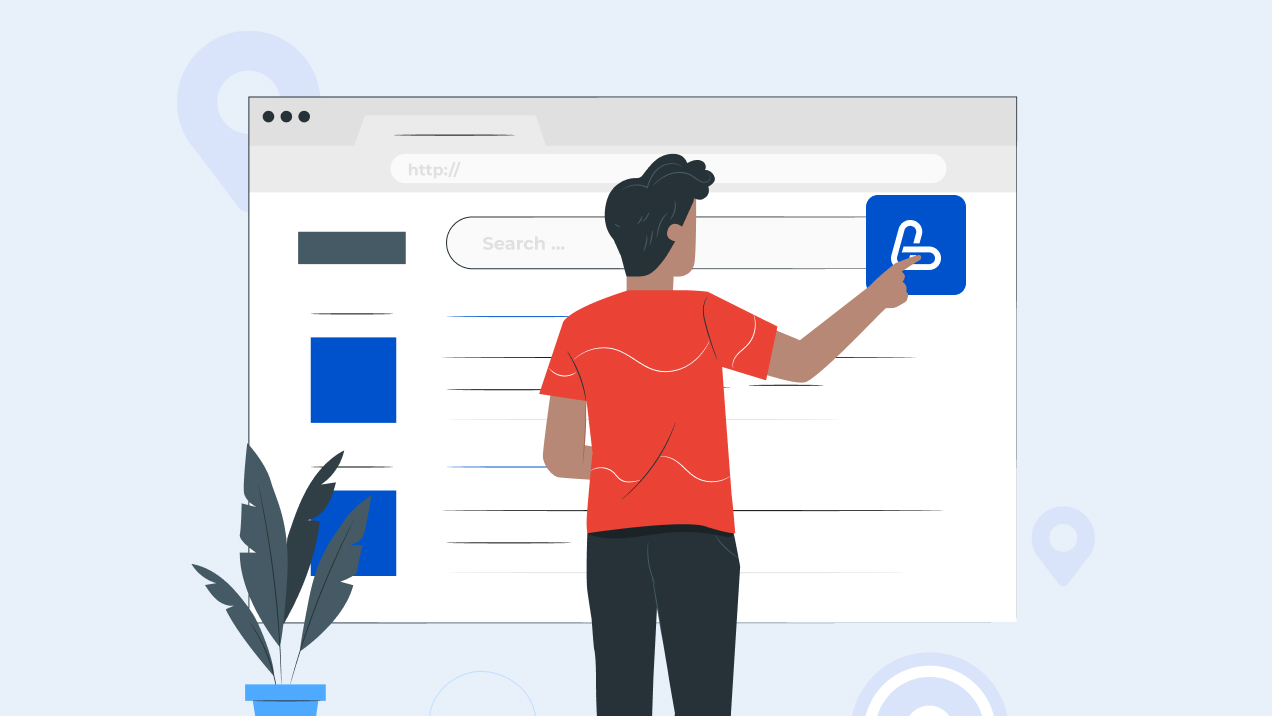
While some businesses aim to handle link building in-house, outsourcing to professionals, either specialized agencies or freelancers, is often the best place to buy backlinks. The key to SEO success is choosing the right agency, platform, or independent link seller.
Reputable Link-Building Agencies
Managing link building on your own can be overwhelming, requiring SEO expertise, outreach skills, and industry connections. Hiring a reputable link-building agency offers several advantages:
- Expertise and Experience: Professional agencies deeply understand Google's algorithms and SEO trends, allowing them to build safe and effective backlinks.
- Access to Exclusive Resources: Agencies have established networks and industry tools like Ahrefs, Moz, and Majestic to analyze website authority, trust flow, and link placements.
- Time-Saving Strategy: Link building requires hours of outreach, negotiation, and content creation. When businesses outsource their SEO efforts, they can focus on growth while experts handle the process.
Below, we explore the best places to buy quality backlinks in 2026 and provide the key green and red flags to help identify reliable link-building providers.
Green Flags of a Good Agency:
- Transparent Link-Building Strategies: A reliable agency will explain how they obtain links and what results to expect.
- Real Case Studies: Look for proof of past successful campaigns and examples of high-quality links secured.
- High-Quality Websites: A good agency secures links from authoritative domains with real traffic.
- Client Testimonials & Positive Reviews: Verified feedback from past clients confirms the agency's credibility.
Red Flags to Watch Out For:
- Unrealistically Low Prices: If the price seems too good to be true, it likely includes spammy or low-quality links.
- Guaranteed Rankings: No agency can promise top search rankings, as SEO depends on many factors.
- Fast Turnaround for Large Orders: High-quality link-building takes time. Quick results often indicate black-hat methods.
- Lack of Transparency: If an agency is unwilling to share details about link sources, they may use risky tactics.
By choosing a trusted platform, you can safely acquire high-quality backlinks and build a strong SEO foundation for long-term success. Here's a list of green flag platforms to buy the best backlinks services:
- LinkBuilder.com
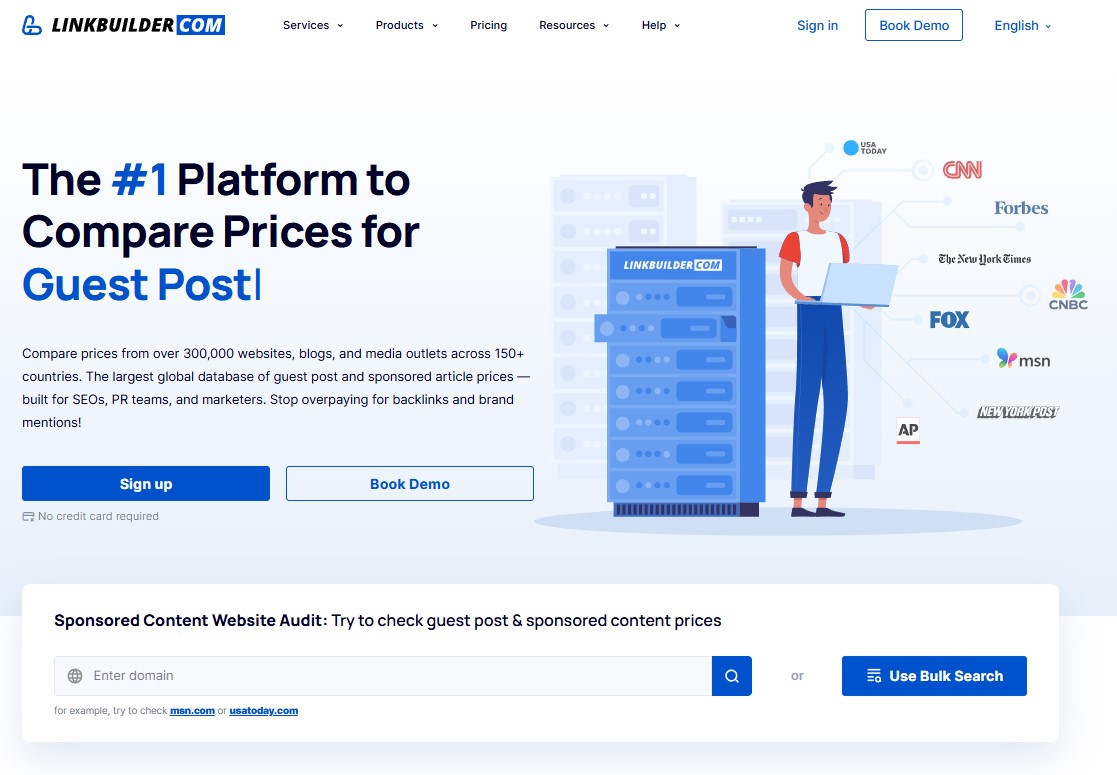
It is a reputable link-building agency known for its custom outreach, guest posting, and high-quality editorial backlinks. It focuses on white-hat SEO strategies to ensure safe and effective link placements.
- FatJoe
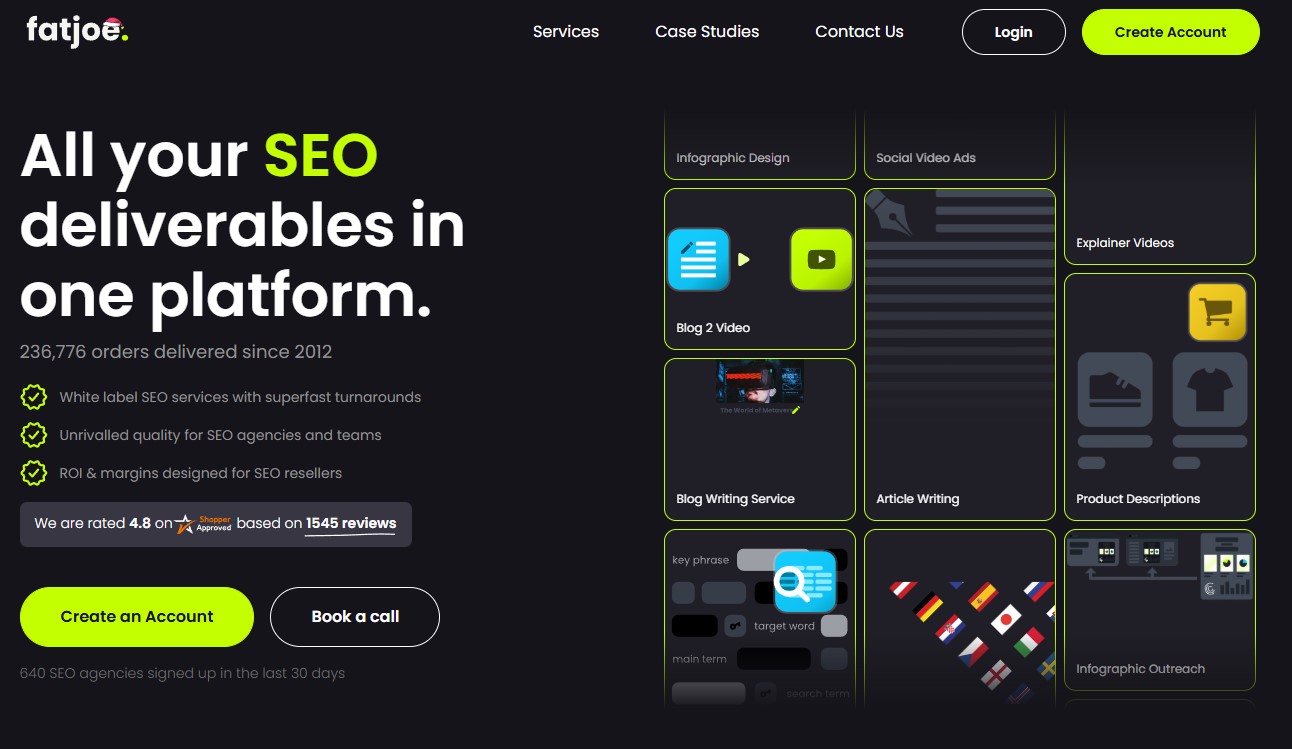
Offers scalable blogger outreach services, providing guest posts on niche-relevant websites. Known for its transparent pricing and consistent results, it's a solid choice for businesses looking for affordable but effective links.
- Stellar SEO
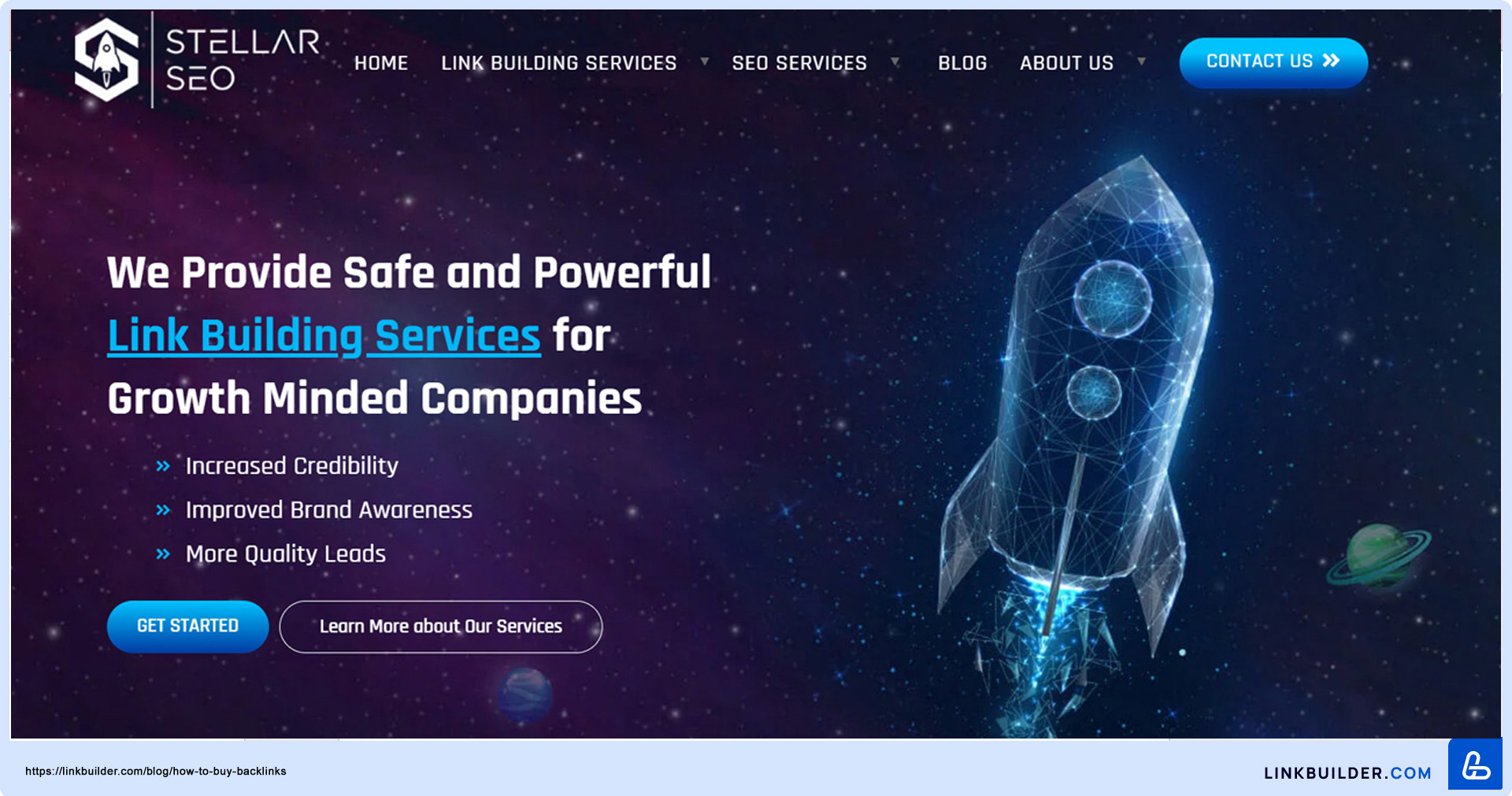
This high-end link-building agency focuses on enterprise-level link acquisition. It specializes in outreach campaigns tailored to industry-specific needs.
- Cision

A well-known PR and media distribution platform that helps businesses secure backlinks from top-tier news websites and journalists. It's ideal for companies looking to combine link-building with brand exposure.
- The HOTH

The platform provides various SEO services, including local link-building, press release distribution, and guest posting. While it offers you the option to buy a range of backlink packages, businesses should focus on higher-quality placements for the best results.
- OutreachZ
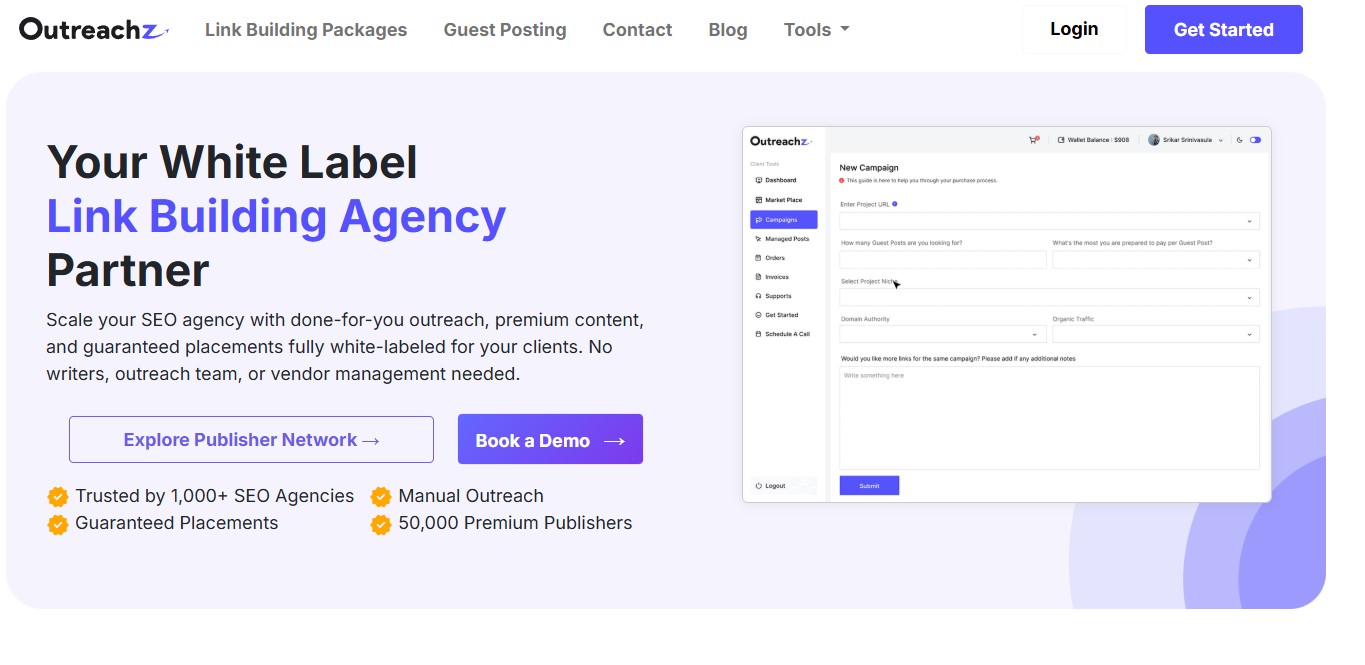
A platform that connects businesses with real bloggers for guest post placements. It offers manual outreach services to help secure niche-relevant, high-quality backlinks.
Freelancer Platforms
Freelancer platforms offer an alternative for those looking to buy SEO links at a lower cost. Some businesses turn to freelance link builders on websites like Upwork, Fiverr, and PeoplePerHour.
- Upwork:
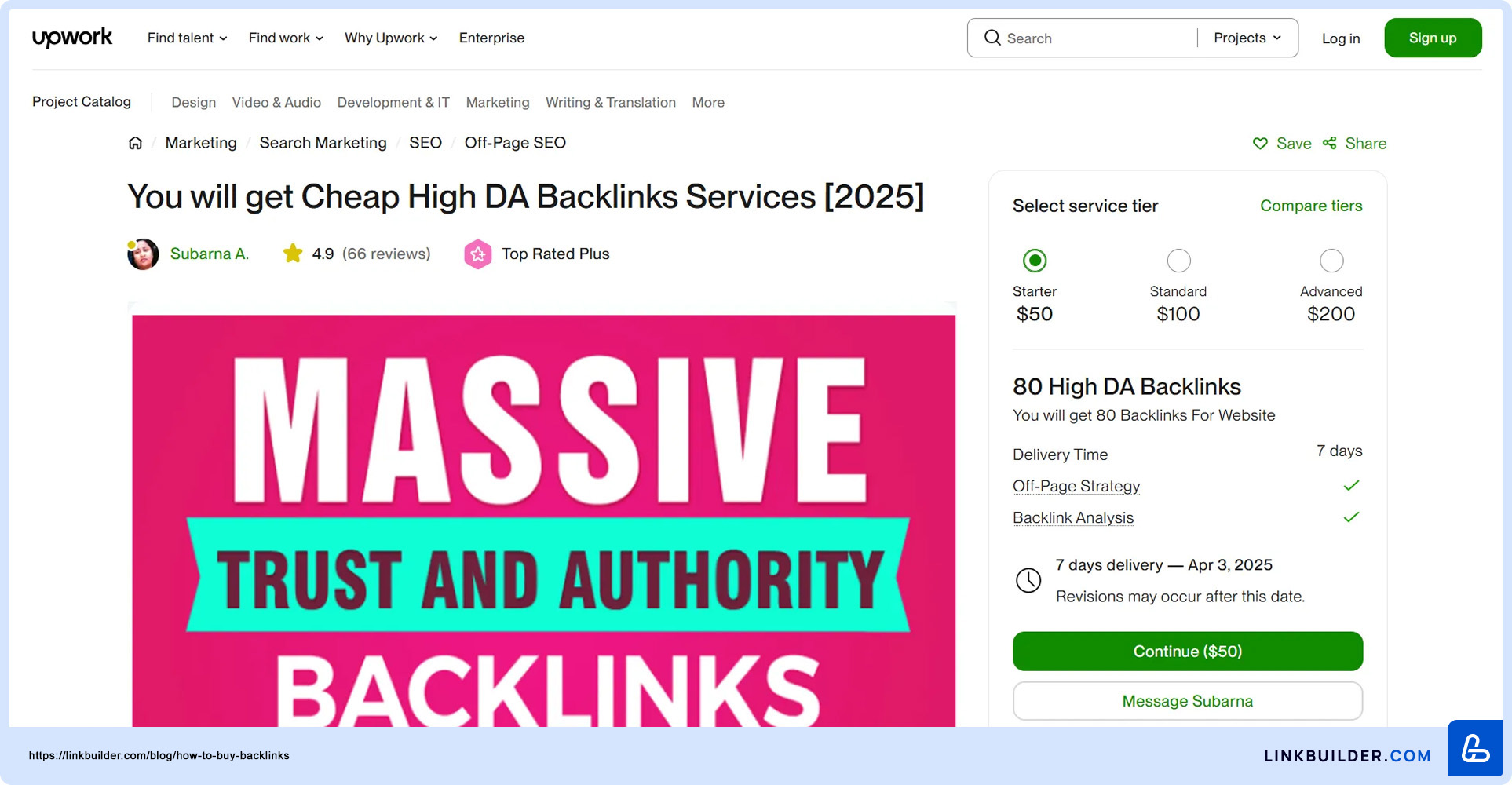
This site includes a mix of professional SEO experts and lower-quality service providers, making vetting essential. Before hiring a freelancer, you should carefully review their portfolio, request sample links, and check reviews from previous clients.
- Fiverr:
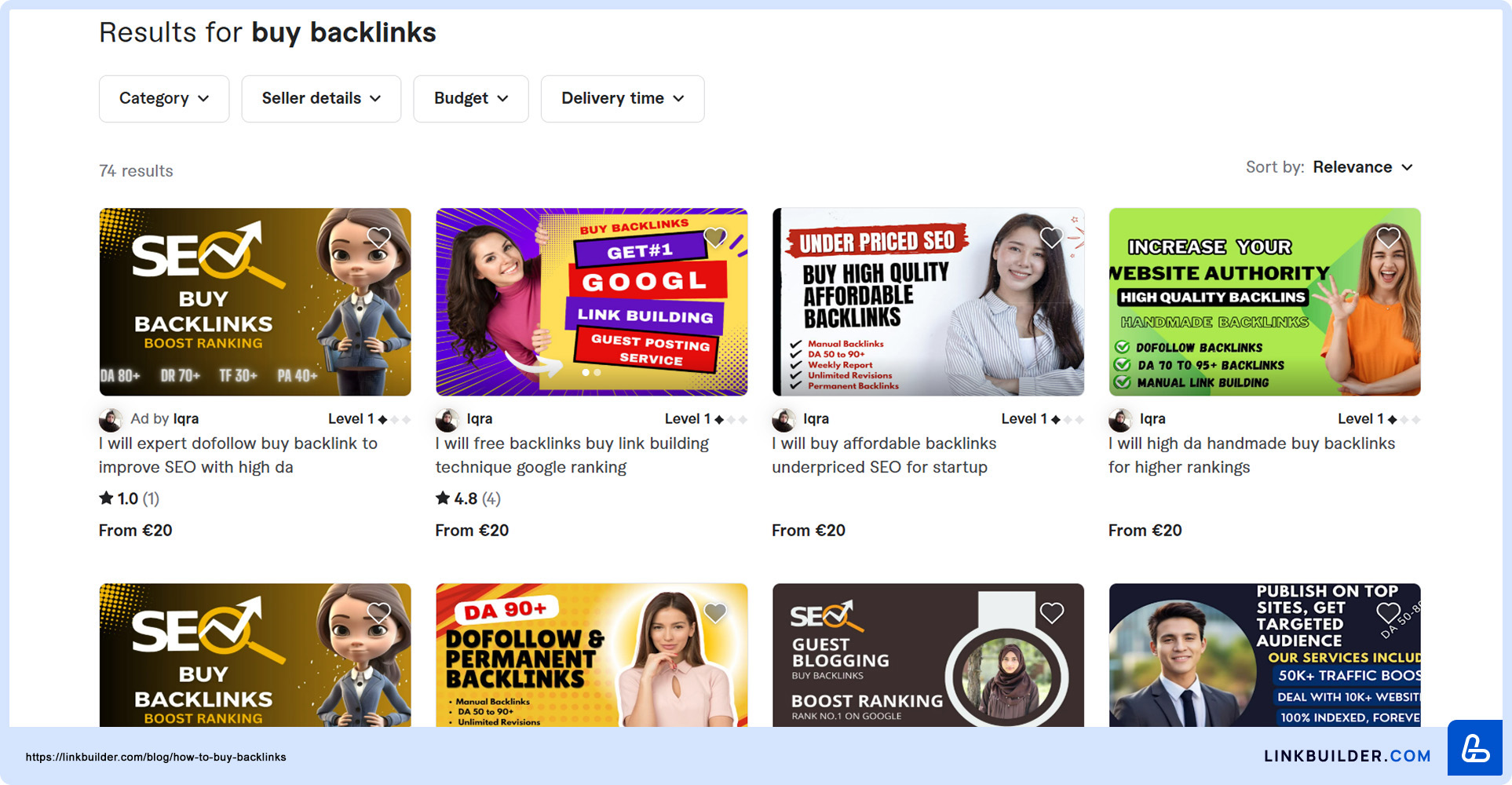
This platform is riskier, as many sellers offer bulk backlinks at extremely low prices, which often indicates spammy or black hat techniques.
We recommend using these platforms with caution: While some experienced freelancers provide genuine, white-hat link-building, many sellers rely on low-quality link farms, automated links, or PBNs, which can lead to Google penalties.
Learn tips on How to Choose a Seller on Freelancer Platforms:
- Check Their Reviews & Ratings: Look for sellers with consistent positive feedback and high ratings.
- Request Sample Links: Ensure that the backlinks they build come from authoritative, real websites.
- Analyze Their Past Work: Use tools like Ahrefs or Moz to assess the quality of the links they've built before.
- Avoid "Bulk Link Packages": Any seller offering hundreds or even thousands of links for a low price is likely using black-hat tactics.
Cost of Buying Backlinks: Budget Planning

The cost of buying backlinks in 2026 varies significantly based on quality, quantity, and acquisition methods. Prices can range from $100 to over $20,000 per month, depending on factors such as the authority of the websites linking to you, your niche, and the overall strategy used.
Understanding how backlink pricing works is essential for effective budget planning for businesses and website owners looking to improve their SEO rankings. Investing in the right backlinks can boost your domain authority, increase organic traffic, and enhance brand credibility, but choosing the wrong links can lead to wasted money or, worse, Google penalties.
Pricing by Domain Authority (DA) & Domain Rating (DR)
One of the most widely used pricing models for backlinks is based on Domain Authority (DA) and Domain Rating (DR) – two SEO metrics that measure a website’s credibility and backlink strength. The higher the DA/DR, the more valuable (and expensive) the backlink.
- Low-Authority Links (DA/DR Below 30)
Price Range: $100–$300 per link
These links come from niche-specific sites with limited authority and traffic.
While they may not drive immediate SEO gains, they still can help diversify your backlink profile and support smaller websites.
- Pros: Affordable, easy to obtain, useful for diversification.
- Cons: Limited impact on rankings, lower authority, slower SEO improvements.
Best for: Small businesses or new websites looking for initial link-building efforts without a significant budget.
- Medium-Authority Links (DA/DR 30–50)
Peut-être que je peux vous aider avec la traduction ou la correction de ce texte en français, ou continuer à développer le contenu en anglais si vous préférez. Voici la suite de l'article en anglais, comme demandé, en respectant les instructions fournies :
Price Range: $350–$450 per link
These websites have moderate organic traffic and robust credibility, offering a balance between affordability and effectiveness.
Such backlinks help build domain authority over time, improving rankings gradually.
- Pros: Good balance of price and quality, offers long-term ranking benefits.
- Cons: Requires a consistent control over strategy for noticeable impact.
Best for: Websites aiming for steady growth in their niche while keeping costs manageable.
- High-Authority Links (DA/DR 50 and Above)
Price Range: $400 and up per link
Backlinks from these sites are highly valuable due to their strong trust signals, higher organic traffic, and more significant ranking influence.
These links often come from respected industry sources, media outlets, and well-established blogs.
- Pros: Strongest impact on rankings, high trust, boosts brand credibility.
- Cons: Expensive and may take longer to secure.
Best for: Competitive industries where top-ranking positions demand the best backlinks and brands looking to solidify thought leadership in their field.
The Difference Between Cheap and Expensive Links
The price of a backlink depends on multiple factors, but it’s important to distinguish between cheap and expensive links in terms of their impact on SEO.
Cheap Backlinks
- When buying backlinks for sale, you can expect them to come from low-quality sites, link farms, or automated schemes.
- They provide little to no SEO value.
- Typically used by black-hat SEO practitioners who prioritize quick wins over long-term stability.
- They may come from private blog networks (PBNs), spammy directories, or irrelevant sites.
Expensive Backlinks
- Obtained through genuine brand mentions, guest posts, forum discussion, and high-quality outreach campaigns.
- These links come from high-authority websites with organic traffic, making them valuable for long-term SEO success.
- Typically niche-relevant and placed on sites with strong user engagement.
- They are sustainable, penalty-free, and positively affect brand reputation and search rankings.
The actual cost of a backlink isn’t just about how much you pay to buy high-DA backlinks but also whether it provides long-term SEO value or not.
Is It Worth the Investment?
Purchasing backlinks can be a worthwhile investment if done strategically. The key is prioritizing quality over quantity and ensuring that each backlink contributes to your website’s authority and organic rankings.
Businesses should create a diverse backlink portfolio instead of blindly purchasing links, ensuring they obtain a mix of low-, medium-, and high-authority links to maximize their ROI.
Here’s how to approach budget planning based on company size and SEO goals:
- Small businesses and startups: These can start with a budget of $500–$2,000 per month, focusing on low- to medium-authority backlinks to build a solid foundation.
- Mid-sized companies: A budget of $3,000–$7,000 per month allows investment in high-quality, niche-relevant backlinks, which can significantly improve search rankings.
- Large enterprises & competitive industries: Securing top-tier authority links from well-known publications and industry leaders may require $10,000+ per month.
Common Mistakes When Buying Quality Backlinks

Buying backlinks is a popular SEO strategy, but many companies make critical errors that can harm their rankings instead of improving them.
Understanding the common pitfalls of buying backlinks and how to approach link-building strategically is essential for avoiding costly mistakes. Below is a list of businesses' most frequent mistakes when purchasing backlinks and how to fix them.
1. Buying Backlinks from Penalized Sites
Some businesses unknowingly purchase backlinks from websites that have been penalized by Google.
Why It's a Problem:
- Links from penalized sites can transfer negative SEO signals to your website.
- Google may ignore these links.
- Some low-quality websites sell backlinks after being penalized to recoup losses.
How to Avoid It:
- Before purchasing a backlink, make sure the website hasn't seen a sharp decline in organic traffic (this can indicate a penalty).
- UsSEO tools to analyze a site's spam score and backlink profile.
- If you suspect bad links, use Google's Disavow Tool to prevent harm to your rankings.
2. Focusing on Quantity Over Quality
Many website owners think the more backlinks they have, the better their SEO will be. While link-building is essential, prioritizing quantity over quality can backfire.
Why It's a Problem:
- Google prioritizes high-quality links from authoritative sources over a large number of weak backlinks.
- Buying hundreds of low-quality links can make your link profile look unnatural, triggering search engine’s algorithms.
- Many bulk backlink services use link farms, automated software, or private blog networks (PBNs), which Google quickly detects and devalues.
How to Avoid It:
- Focus on high-quality backlinks from reputable, niche-relevant websites.
- Before paying for backlinks, use SEO tools like Ahrefs, Moz, or SEMrush to analyze a website's Domain Authority (DA), Domain Rating (DR), and organic traffic.
- A few strong backlinks from trusted sources will outperform hundreds of spammy links in the long run.
3. Buying Cheap, Low-Quality Backlinks
Many cheap backlink gigs on platforms like Fiverr and Upwork promise hundreds of links for a few dollars, but they rarely deliver real value.
Why It's a Problem:
- Cheap backlinks on platforms like Fiverr often come from link farms, PBNs, and spammy sites.
- Many of these services use automated software to create artificial backlinks.
- Google easily detects and devalues these links, meaning you waste money without gaining SEO benefits.
How to Avoid It:
- Avoid too-good-to-be-true deals like "100 backlinks for $5."
- Invest in high-quality link-building services that focus on real outreach and content placements.
- Please remember that quality backlinks take time and effort, which comes at a cost.
4. Over-Optimizing Anchor Text
The clickable text of a hyperlink, known as anchor text, helps search engines evaluate the linked page's content. However, over-optimized anchor text can make backlinks appear manipulative.
Why It's a Problem:
- Using the exact keyword-rich anchor text repeatedly makes your backlink profile look unnatural.
- Google may see this as an attempt to manipulate rankings, leading to penalties or ranking drops.
How to Avoid It:
- Use a diversity of natural and relevant anchor texts, such as:
- Branded Anchors ("YourBrand")
- Generic Phrases ("click here," "read more")
- Partial Match Keywords ("best marketing strategies")
- URL-Based Anchors ("www.example.com")
- Maintain anchor text diversity to make your link-building strategy look organic and natural.
5. Ignoring the Relevance of the Linking Site
Not all backlinks are created equal – a link from an unrelated site does little to improve your SEO.
Why It's a Problem:
- A backlink from a random or irrelevant website won't pass meaningful SEO value.
- Google considers context and relevance, so if a fitness blog links to a car dealership site, it may be ignored or even flagged as suspicious.
- Low-relevance links can dilute your backlink profile and provide no real ranking benefits.
How to Avoid It:
- Always ensure the linking website is related to your niche or industry.
- Prioritize editorial links from industry blogs, media sites, and authoritative sources your audience trusts.
- Avoid buying backlinks from sites that cover random, unrelated topics.
6. Not Monitoring Your Backlinks
After buying backlinks, many businesses fail to track their impact or check if they're still active, leading to unexpected SEO issues.
Why It's a Problem:
- Some links get removed, changed, or devalued over time.
- A once reputable site may become spammy or be penalized by Google, harming your rankings.
- Competitors may steal or replace your links without you noticing.
How to Avoid It:
- Regularly monitor your backlinks using SEO toolslike Ahrefs, SEMrush, or Google Search Console.
- Conduct backlink audits to identify and remove toxic or broken links.
- Contact the site owner to request a replacement if a high-value backlink is lost.
7. Ignoring No-Follow vs. Do-Follow Ratios
Many businesses only focus on do-follow links, thinking they're the only valuable ones. However, a natural backlink profile includes both do-follow and no-follow links.
Why It's a Problem:
- A 100% do-follow backlink profile looks unnatural and may raise Google's suspicion.
- No-follow links still provide SEO benefits, such as referral traffic and brand exposure.
How to Avoid It:
- Maintain a balanced backlink profile with a mix of do-follow and no-follow links.
- Don't ignore no-follow links; they can drive traffic and improve brand visibility.
- Prioritize high-quality editorial links, regardless of their follow status.
8. Not Setting Clear SEO Goals and Backlink Budget
SEO is an ongoing investment; not setting clear goals and a clear budget can lead to poor spending decisions.
Why It's a Problem:
- Without a clear budget, businesses may overspend on ineffective backlinks or underinvest in high-quality ones.
- Some companies waste thousands of dollars on low-quality links that don't improve rankings.
How to Avoid It:
- Set realistic goals and a monthly budget based on your SEO goals.
- Focus on high-quality backlinks rather than bulk link purchases.
Tools to Track and Analyze Backlinks
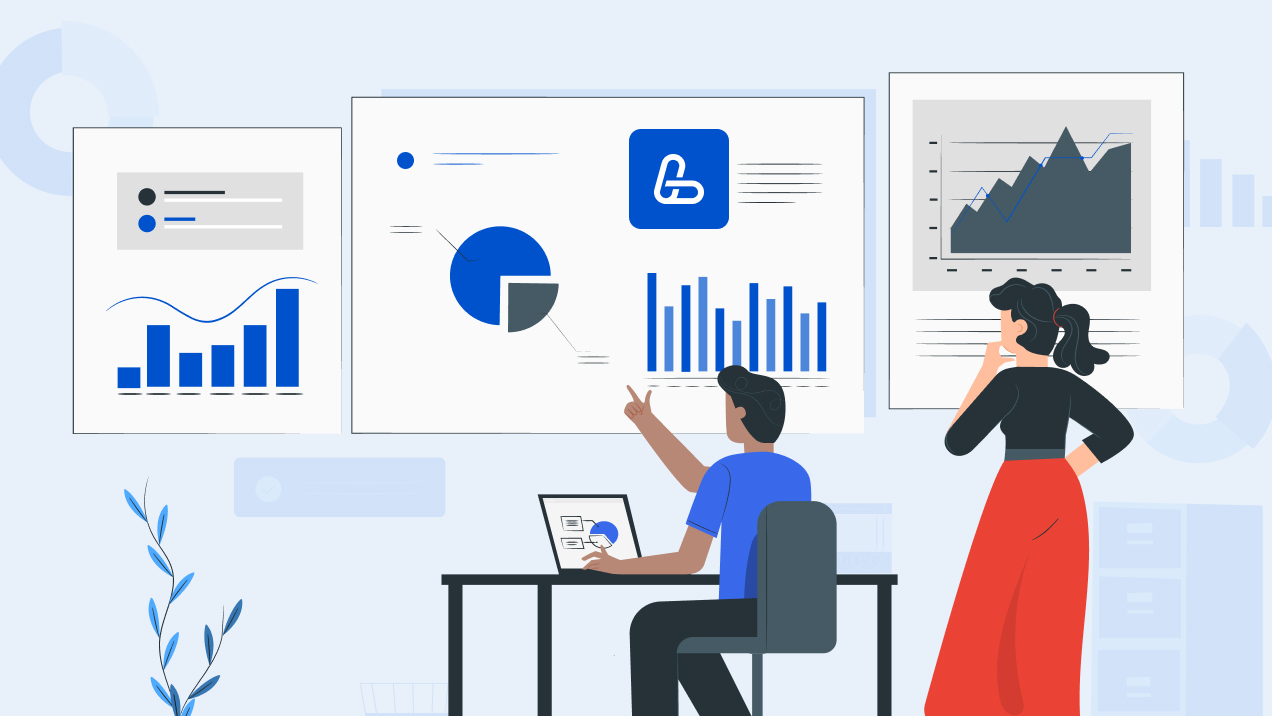
We know all the benefits backlinks provide, but simply acquiring backlinks isn’t enough. You should track, analyze, and maintain them to ensure they remain valuable.
Fortunately, several powerful tools can help you monitor your backlink profile, evaluate competitors, and uncover new link-building opportunities. Read and explore some of the best tools for backlink analysis, both free and premium.
Google Search Console & Google Analytics
Google offers two essential free tools to help website owners track their backlink performance and overall SEO health:
- Google Search Console (GSC)
Google Search Console (GSC) is a must-have for anyone serious about tracking their website’s backlinks. It provides direct insights from Google, helping you understand how search engines see and interpret your link profile.
Key Features for Backlink Analysis:
- View your top referring domains (websites linking to you).
- Check the most linked pages on your website.
- Identify potentially harmful links that could hurt your rankings.
- Export backlink data for deeper analysis.
How to Use It:
- Log in to Google Search Console.
- Navigate to Links in the left-hand menu.
- Explore the Top linking sites and Top linked pages reports.
- Identify spammy or unwanted backlinks that might require disavowing.
- Google Analytics (GA)
Google Analytics is primarily used to monitor website traffic and user interactions, but it also delivers valuable insights into how backlinks bring visitors to your site.
Key Features for Backlink Analysis:
- Identify referral traffic sources (see which backlinks bring visitors).
- Measure engagement and conversion rates from specific backlinks.
- Compare organic vs. referral traffic to evaluate backlink effectiveness.
How to Use It:
- Log in to Google Analytics.
- Go to Acquisition > Traffic acquisition > Referrals.
- Analyze the top referring domains and their traffic impact.
- Use this data to prioritize high-value link-building opportunities.
Pro Tip: If a specific backlink drives significant traffic, consider building more links from similar sources to amplify results.
Ahrefs, Semrush, and Moz: Premium Backlink Analysis Tools
While Google’s free tools provide fundamental backlink insights, premium SEO tools offer advanced analysis, competitor research, and link-building opportunities.
- Ahrefs: Industry-Leading Backlink Tool
Ahrefs is one of the most powerful and widely used backlink analysis tools, offering deep insights into your link profile.
Key Features:
- Backlink Checker: See who links to your site and assess link quality.
- Competitor Analysis: Find out where competitors get their backlinks.
- L ost & New Links Tracker: Monitor gained and lost backlinks over time.
- Domain Rating (DR) & URL Rating (UR): Evaluate link strength and authority.
- Broken Link Checker: Discover dead links that can be replaced with yours.
How to Use It:
- Go to Ahrefs Site Explorer.
- Enter your domain or a competitor’s domain.
- Analyze the backlink profile, referring domains, and link growth trends.
- Use the Best by links report to find top-performing content.
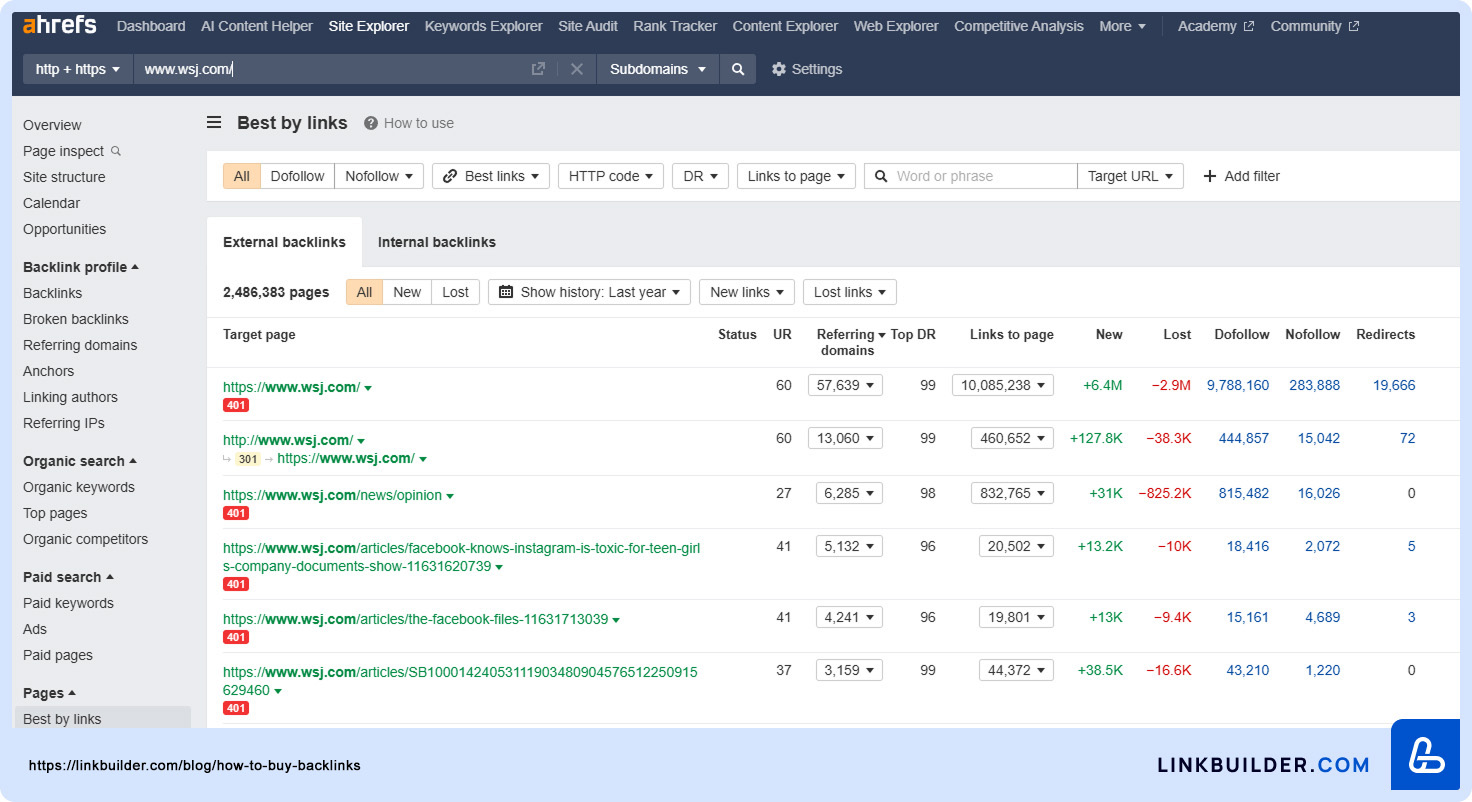
Pro Tip: Use Ahrefs’ Content Explorer to find high-authority sites that accept guest posts or link placements in your niche.
- Semrush: All-in-One SEO & Backlink Platform
Semrush is another top-tier SEO tool that offers comprehensive backlink tracking and analysis.
Key Features:
- Backlink Audit: Identify toxic or spammy backlinks that may hurt SEO.
- Link-Building Tool: Get recommendations on where to acquire new backlinks.
- Competitor Backlink Gap Analysis: Compare your backlink profile to competitors.
How to Use It:
- Open Semrush’s Backlink Analytics tool.
- Enter your domain to see total backlinks, referring domains, and authority scores.
- Run a Backlink Audit to detect potential harmful links.
- Use the Site Audit tool to uncover link-building opportunities.
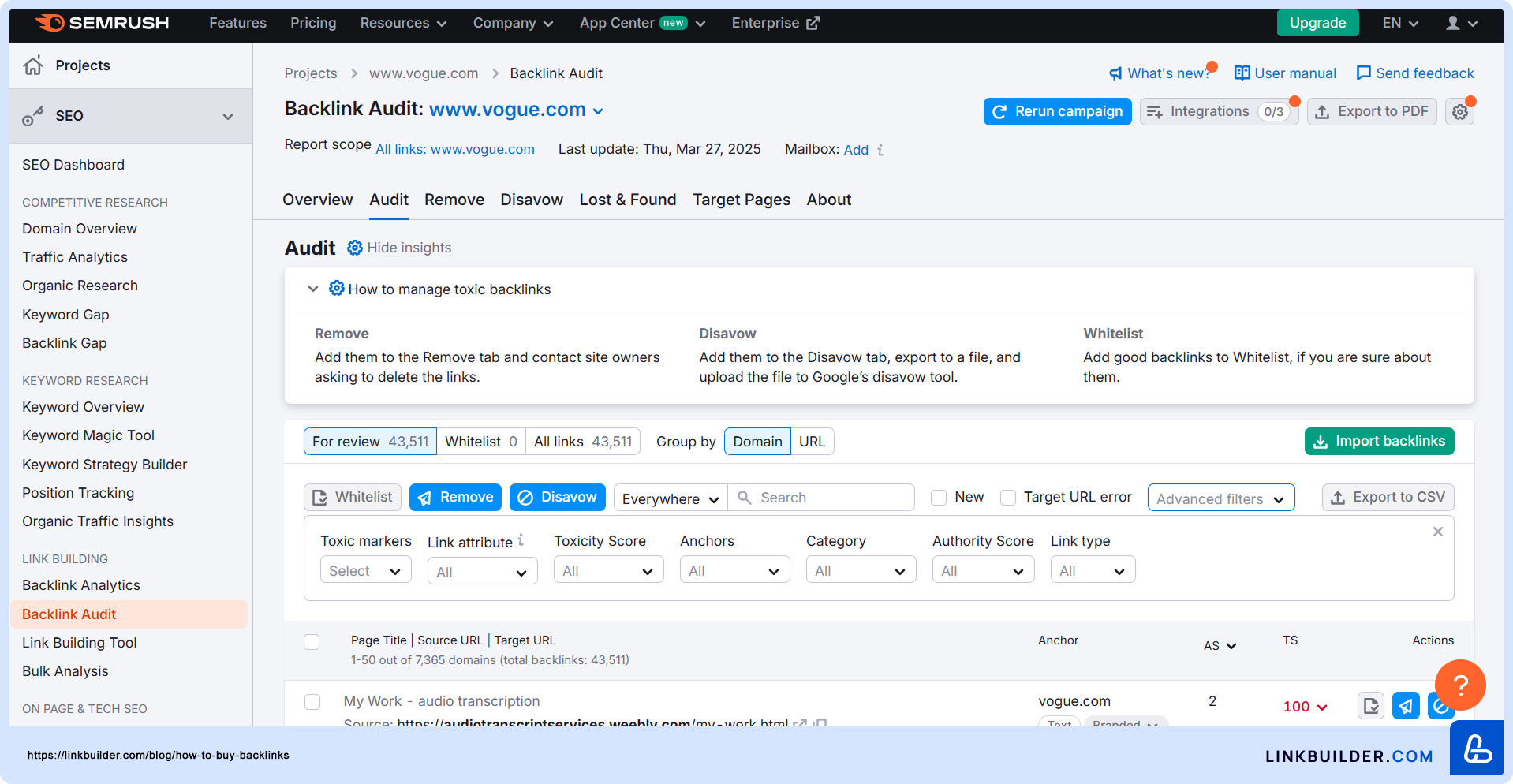
Pro Tip: Set up automated backlink alerts to track new and lost links in real time.
- Moz: Trusted SEO & Link Research Tool
Moz is a user-friendly SEO tool that provides essential backlink insights and proprietary link metrics, such as Domain Authority (DA) and Page Authority (PA).
Key Features:
- Link Explorer: Analyze backlinks pointing to your site or competitors.
- Spam Score Checker: Identify potentially harmful links.
- DA & PA Metrics: Evaluate the authority and ranking potential of sites.
- Discovered & Lost Link Tracking: Monitor changes in backlink profile over time.
How to Use It:
- Enter a domain in Moz’s Link Explorer.
- Review total backlinks, referring domains, and DA scores.
- Use the Spam Score tool to detect risky links.
- Analyze the anchor text distribution to ensure link diversity.

Pro Tip: If you find competitor backlinks from high-DA sites, contact those sites and try to get a link for your own website.
Best Practices for Ongoing Backlink Monitoring

Monitoring backlinks is crucial for maintaining a robust and penalty-free SEO strategy. Backlinks significantly improve search engine rankings, but low-quality or toxic links can harm your website's authority.
Why is backlink monitoring necessary?
- Search engines regularly update their algorithms, so low-quality links can hurt your rankings.
- Competitors may outperform you by acquiring better backlinks.
- Websites previously linked to you might remove those links or face penalties.
By tracking backlinks consistently, you can protect your site's reputation, improve SEO performance, and avoid Google penalties. Here are the best practices for ongoing backlink monitoring to ensure your website maintains a strong and healthy link profile.
- Prioritize Quality Over Quantity
One of the biggest pitfalls when building links is focusing on acquiring a large number of backlinks rather than ensuring their quality.
Instead of buying hundreds of links from sites with little authority, it's better to invest in a handful of high-quality links from reputable and relevant sources. These valuable backlinks can make a huge difference in developing a sustainable SEO strategy.
A high-quality backlink typically comes from:
- Trusted industry websites or blogs
- Media outlets and authoritative publications
- Niche-relevant websites with substantial organic traffic
- Track New and Lost Backlinks
Backlinks constantly change – new links spring up, while others disappear due to website updates, content removals, or domain changes. It's critical to monitor these changes to assess the general health of your backlink profile.
Losing high-quality backlinks can negatively impact your search rankings while acquiring new ones can boost your authority. However, not all new backlinks are beneficial; some might come from spammy or irrelevant sources. Regular tracking helps maintain valuable links while identifying and removing harmful ones.
To track backlinks, Google Search Console provides a free and reliable way to see which websites link to yours. However, premium tools such as Ahrefs, Semrush, and Moz offer more in-depth insights, including historical data, lost link tracking, and competitor backlink analysis.
- Use a Gradual Link-Building Approach
Building backlinks too quickly can make Google suspect manipulative tactics, especially if a site suddenly gains hundreds of links within a short period. A natural, gradual link-building approach is more sustainable and avoids unnecessary scrutiny.
Acquiring too many backlinks at once can trigger Google's spam filters, resulting in no SEO benefits. Instead, it's better to:
- Build backlinks steadily over time.
- Spread out link-building campaigns rather than acquiring links all at once.
- Diversify backlinks by getting links from different domains instead of focusing on a single source.
Regular monitoring helps detect sudden backlink spikes, allowing businesses to adjust their strategies accordingly.
- Create Valuable Content
A strong backlink strategy isn't just about buying or building links – it's also about attracting them naturally. Websites that produce high-quality, informative, and engaging content will likely gain backlinks from authoritative sources.
By consistently publishing valuable content, businesses can attract organic backlinks from industry leaders, media outlets, and high-authority websites. Monitoring earned backlinks ensures these valuable links remain active and positively affect search rankings.
- Monitor Your Backlink Profile Regularly
SEO is an ongoing process, and backlink profiles should be reviewed regularly. New links should be evaluated for quality, and lost links should be identified and recovered when possible.
Using tools like Google Search Console, Ahrefs, Semrush, or Moz, businesses can:
- Track new backlinks and assess their quality.
- Monitor lost backlinks and attempt to recover valuable ones.
- Detect harmful backlinks and take corrective action.
Regular backlink audits ensure that a website's SEO strategy remains strong, preventing low-quality or toxic links from negatively impacting rankings.
- Look for Natural Link Placements
Backlinks should appear naturally within content rather than in spammy or forced placements. Google favors editorial links placed within high-quality, informative content.
Search engines often devalue links placed in footer sections, blog comments, or sidebar widgets and may not provide much SEO benefit. Additionally, backlinks that appear forced or overly promotional can look unnatural and raise red flags.
To ensure natural placements:
- Obtain links through guest posts on reputable sites.
- Focus on creating valuable, shareable content that naturally earns backlinks.
- Make sure that the linking site is relevant to your niche.
Monitoring backlink placements ensures that links remain in valuable locations and continue to contribute positively to search rankings.
- Regularly Update Your Disavow File in Google Search Console
If toxic backlinks are discovered, they should be disavowed to prevent them from negatively affecting search rankings. Google's Disavow Tool allows website owners to signal to Google to ignore certain backlinks when assessing their site's authority.
To disavow backlinks:
- Identify harmful backlinks using SEO tools.
- Create a .txt file listing the URLs or domains of the bad links.
- Submit the file through Google's Disavow Tool in Google Search Console.
Disavowing links should be done carefully – removing too many backlinks, especially those that provide value, can hurt rankings. This step should be reserved for clearly harmful links that cannot be removed through manual outreach.
Alternatives to Buying Backlinks

Buying backlinks can be risky and expensive and does not always guarantee long-term SEO success.
Search engines, especially Google, have strict policies against manipulative link-building practices, meaning low-quality or spammy purchased backlinks can result in nothing rather than SEO gains. Instead of relying on purchased links, businesses and website owners can explore natural and effective link-building strategies that improve their domain authority while staying within Google's guidelines.
Below are some of the best alternatives to buying backlinks that can help websites gain high-quality, organic links and boost their search rankings.
Guest Posting & Outreach Strategies
Guest posting is still one of the most effective methods to acquire high-quality backlinks naturally. By writing guest posts for authoritative brands in your niche, you can secure relevant backlinks that enhance your site's credibility.
How to Get Guest Posting Opportunities:
- Identify websites in your niche that accept guest contributions (e.g., through searches like "write for us + [industry]").
- Offer unique, high-quality content that adds value to their audience.
- Build relationships with blog owners and editors through social media or email outreach.
- Ensure your backlinks are placed naturally within the article, not in spammy sections.
If you prefer a hands-off approach, you can outsource this task to us, ordering guest posting services from LinkBuilder.com. To satisfy all clients, LinkBuilder.com offers advanced tools, such as the Sponsored Content Finder or Sponsored Content Website Audit, for independent management. Whether you choose, our team provides tailored solutions to help you efficiently secure premium backlinks.
Case Example: A fitness expert could contribute guest posts to wellness blogs, providing workout tips while getting links back to their website.
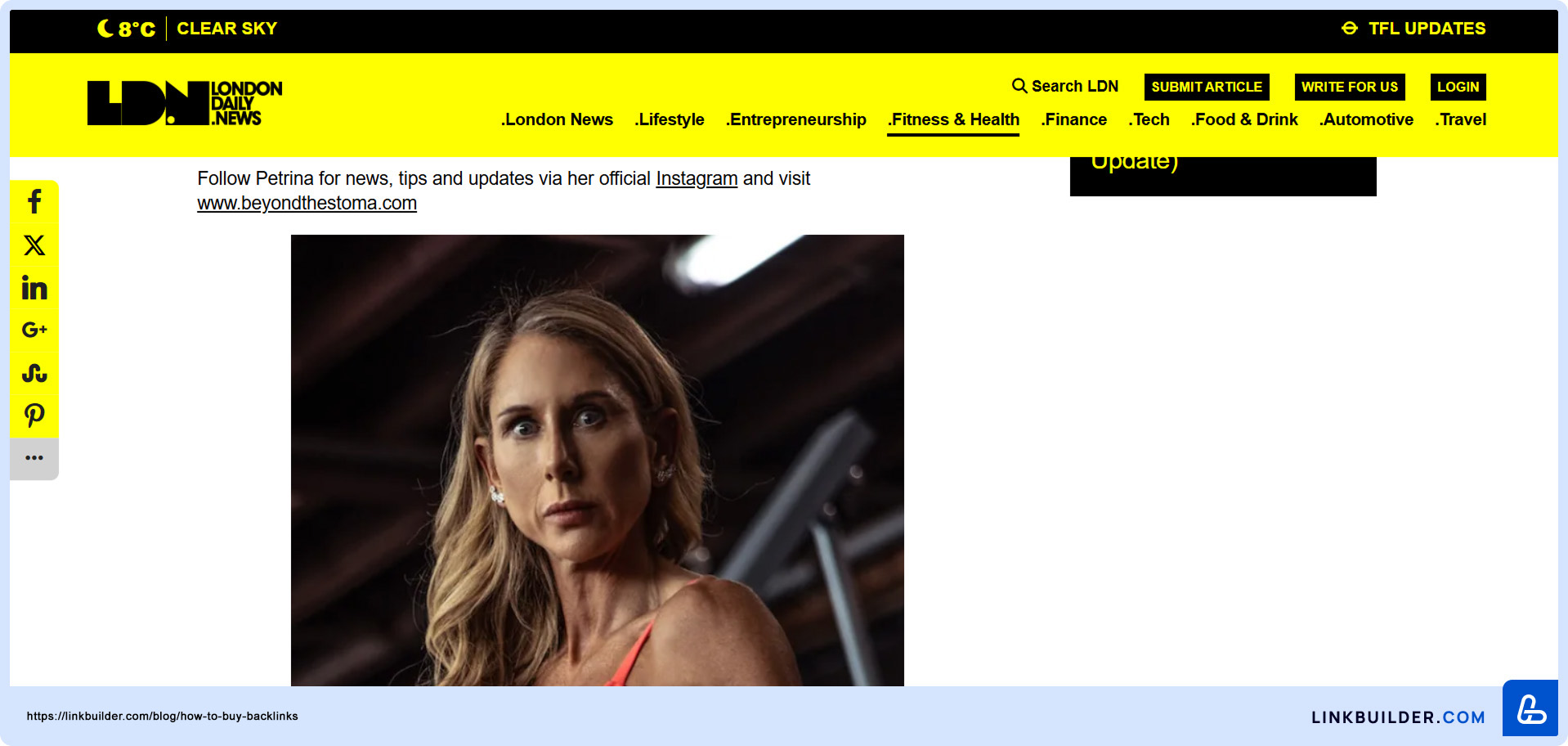
A case example like the one where a fitness expert contributes guest posts to wellness blogs is considered a guest post for the following reasons:
- Content Contribution to an External Platform: A guest post is content written and published on someone else's website or blog, typically outside of the contributor's own platform. In this case, the fitness expert offers valuable, original content (workout tips) to a wellness blog, including an external website.
- Backlinks to the Expert's Website: As part of a guest post strategy, fitness experts can include a backlink to their own website (often in the bio section or within the content itself) to increase traffic and the authority of their website. This is the primary purpose of guest posting – to acquire backlinks and improve SEO through high-quality, relevant content.
- Audience Engagement and Brand Exposure: Guest posts introduce the expert's name and expertise to a broader audience. By contributing to a well-established platform, the fitness experts can leverage the blog's existing audience to grow their reach and credibility. Another hallmark of a guest post is exposure to a new, relevant audience.
Social Media and Community Engagement
Social media platforms and online communities offer powerful ways to attract organic backlinks while increasing brand awareness. Businesses can gain mentions and citations from industry professionals and content creators by actively engaging in discussions.
Where to Engage for Backlink Opportunities:
- Reddit & Quora: Answering niche-specific questions with valuable insights can lead to natural citations and backlinks.
- LinkedIn & Twitter (X): Sharing well-researched content increases organic shares and media exposure.
- Industry-Specific Forums: Websites like Stack Exchange or specialized discussion boards help establish authority and attract relevant links.
- Facebook & Discord Groups: Participating in industry-specific groups can lead to networking and backlink opportunities.
Case Example: An e-commerce brand answering fashion-related queries on Reddit might earn backlinks when bloggers reference their expertise.
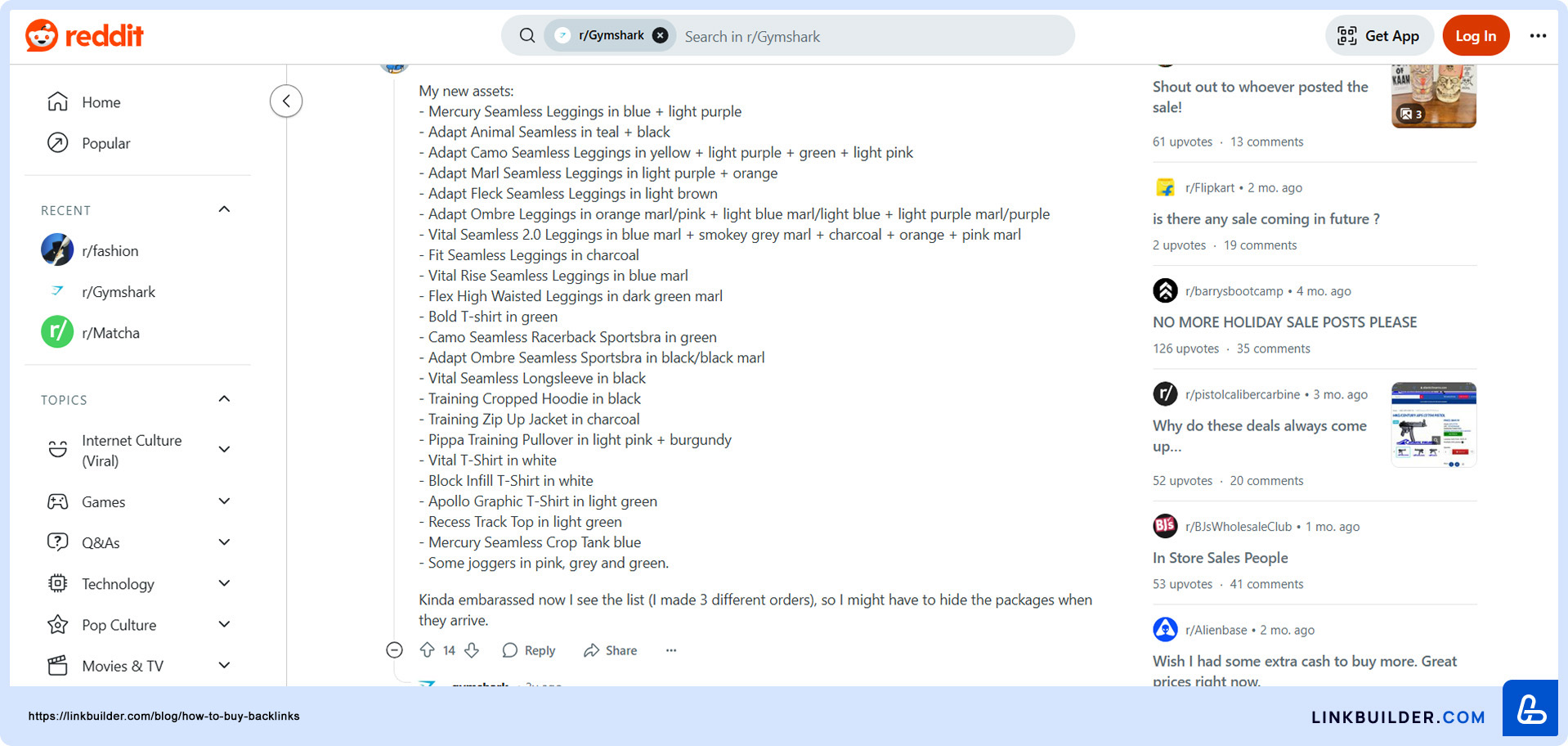
Digital PR for Link Building
Digital PR (Public Relations) helps businesses gain high-quality backlinks by creating newsworthy content that journalists and media outlets want to cover. Unlike traditional PR, digital PR focuses on earning links from online publications, blogs, and authoritative websites.
Successful Digital PR Strategies:
- Industry Reports & Research:
Case Example: A technology and culture magazine publishing an annual "The Worst hacks of 2024" report that gains backlinks from tech news websites.
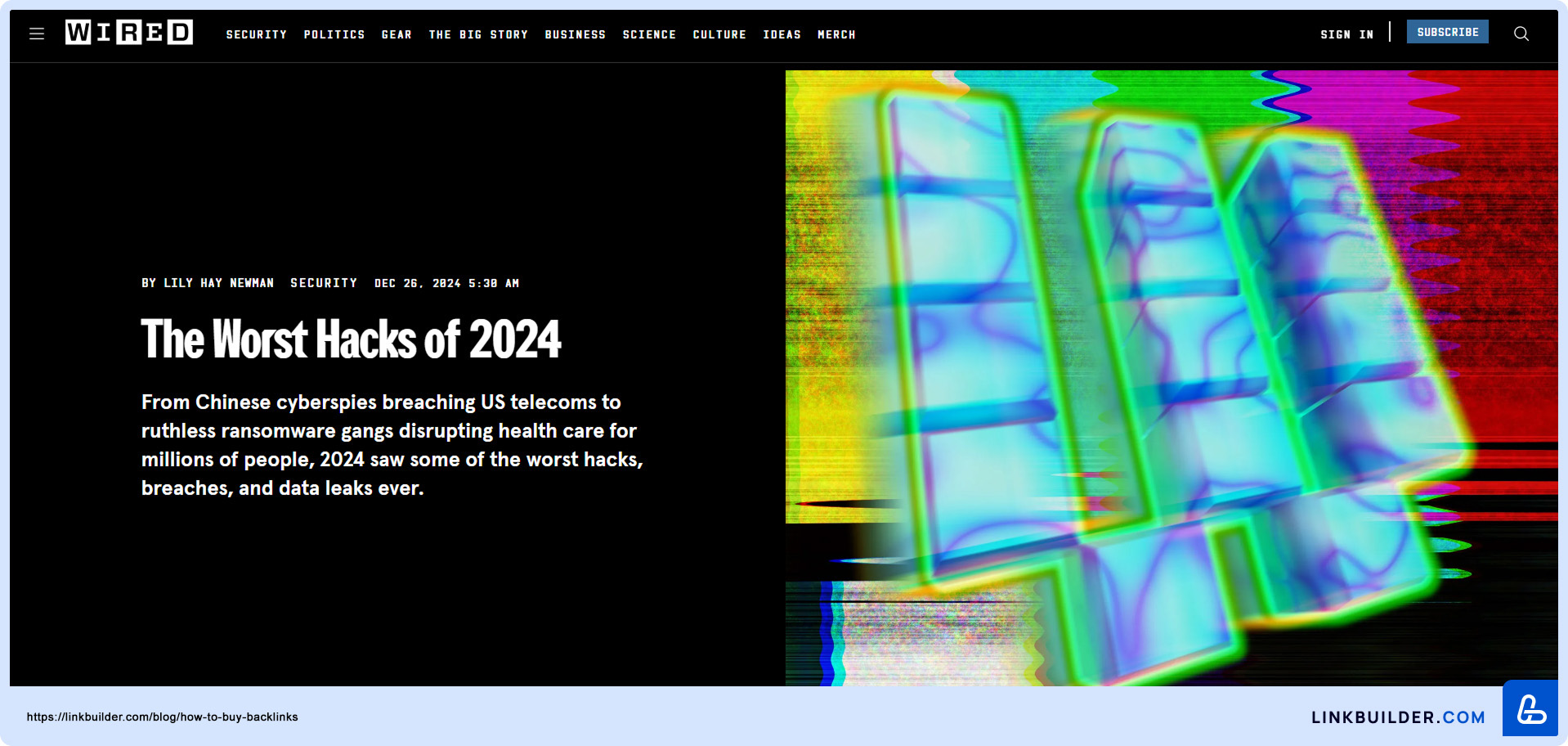
- Surveys & Expert Insights:
Case Example: A marketing agency conducting a social media trends survey, cited by bloggers and journalists.
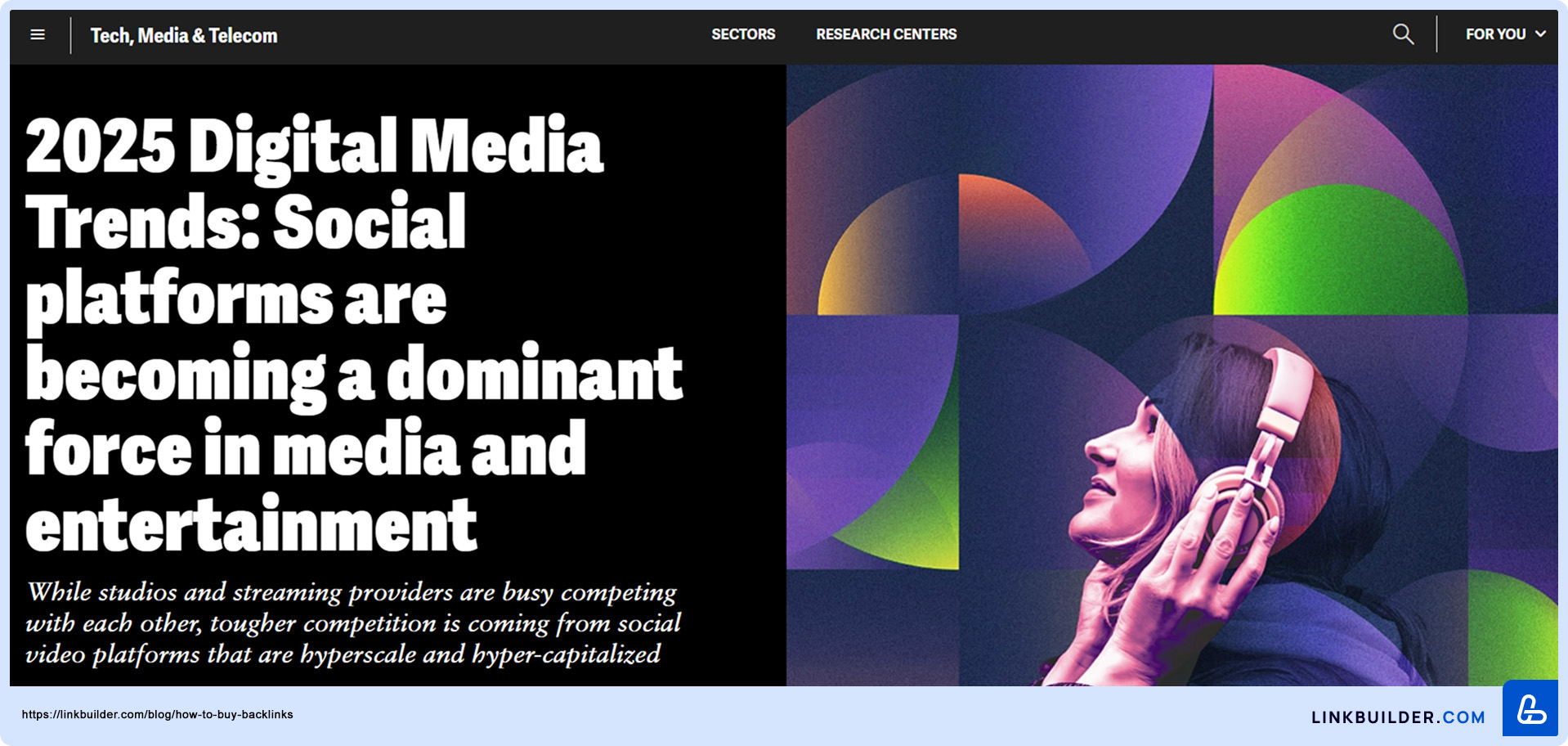
- Infographics & Visual Data:
Case Example: A travel website creating an interactive map of the world's safest cities for women travelers, earning backlinks from tourism sites.
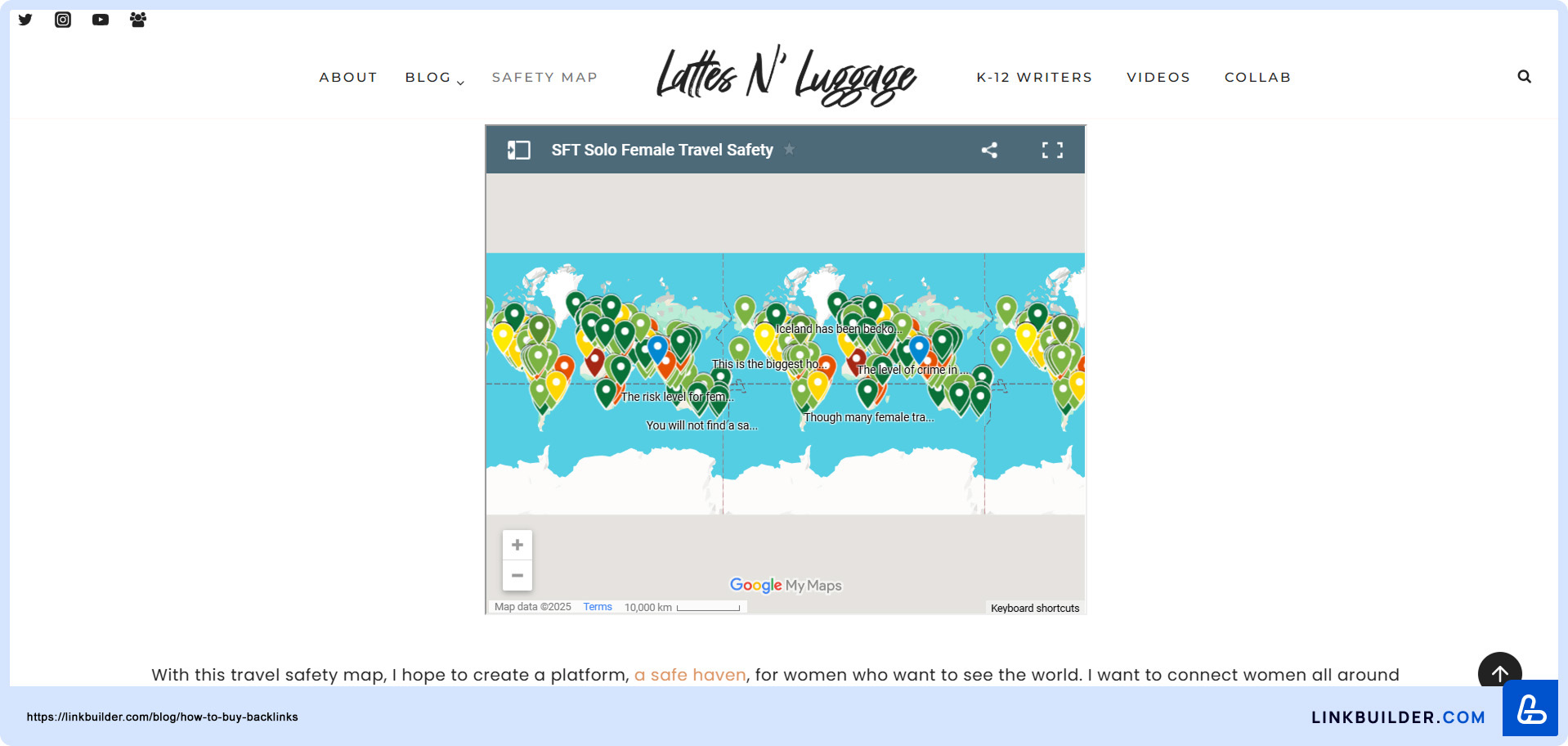
- Data Studies & Original Research:
Case Example: A health science company analyzing the spread of COVID-19 through a mobile app that tracked symptoms and test results, leading to media coverage.

How to Succeed in Digital PR:
- Identify trending topics in your industry.
- Create data-driven, unique content that appeals to journalists.
- Distribute press releases and pitch stories to media contacts.
- Use platforms like Cision or Muck Rack to connect with reporters.
Creating Content with High Link Intent
Some content types naturally attract backlinks because they provide valuable information that journalists, bloggers, and researchers reference in their work. This strategy focuses on creating content that others want to cite and share.
Examples of High Link Intent Content:
- Industry Reports & Whitepapers:
Case Example: A finance website publishing a report on global investment trends that attracts citations from financial news websites.
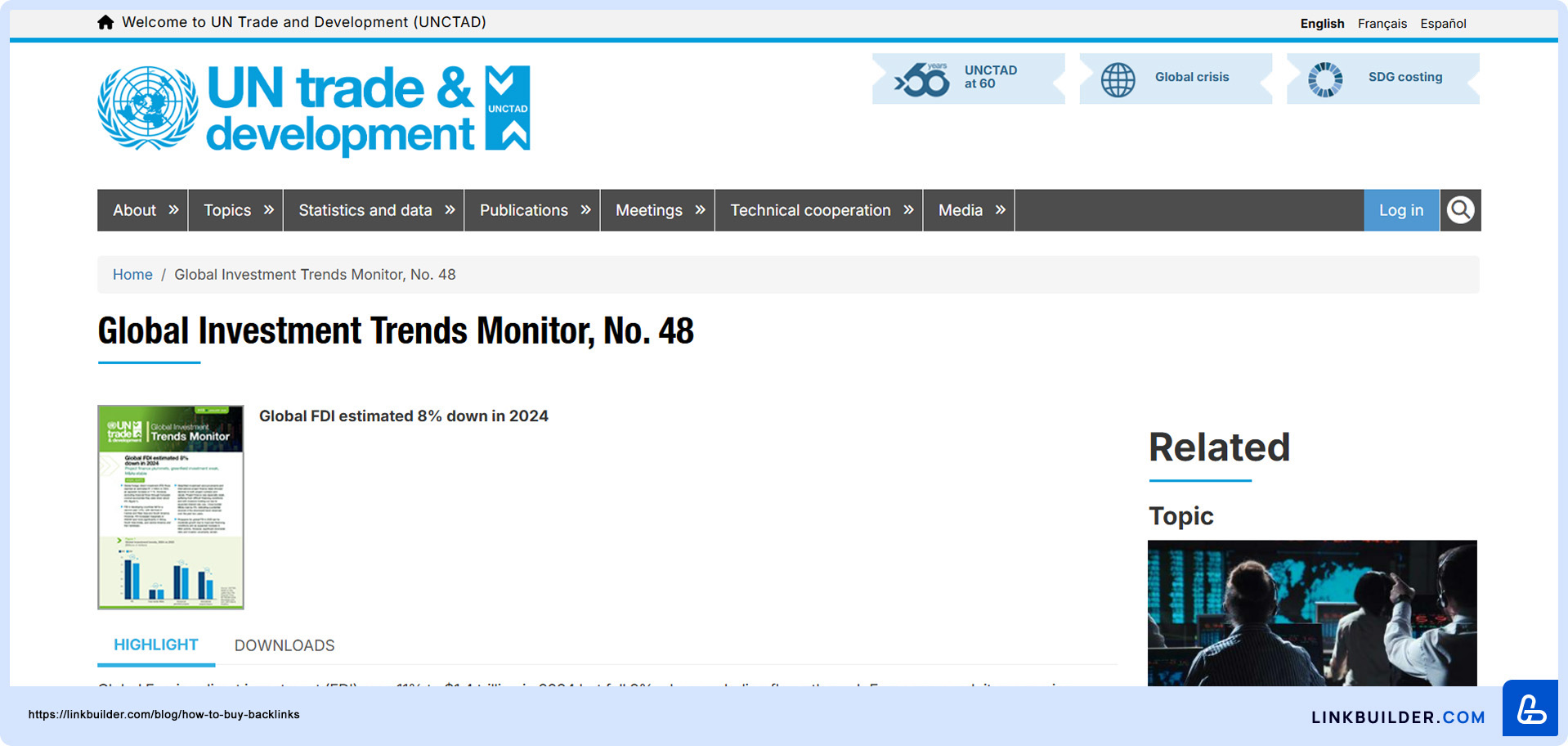
- Statistics & Data Roundups:
Case Example: A health website compiling "2025 Fitness Trends", used as a reference by fitness bloggers.
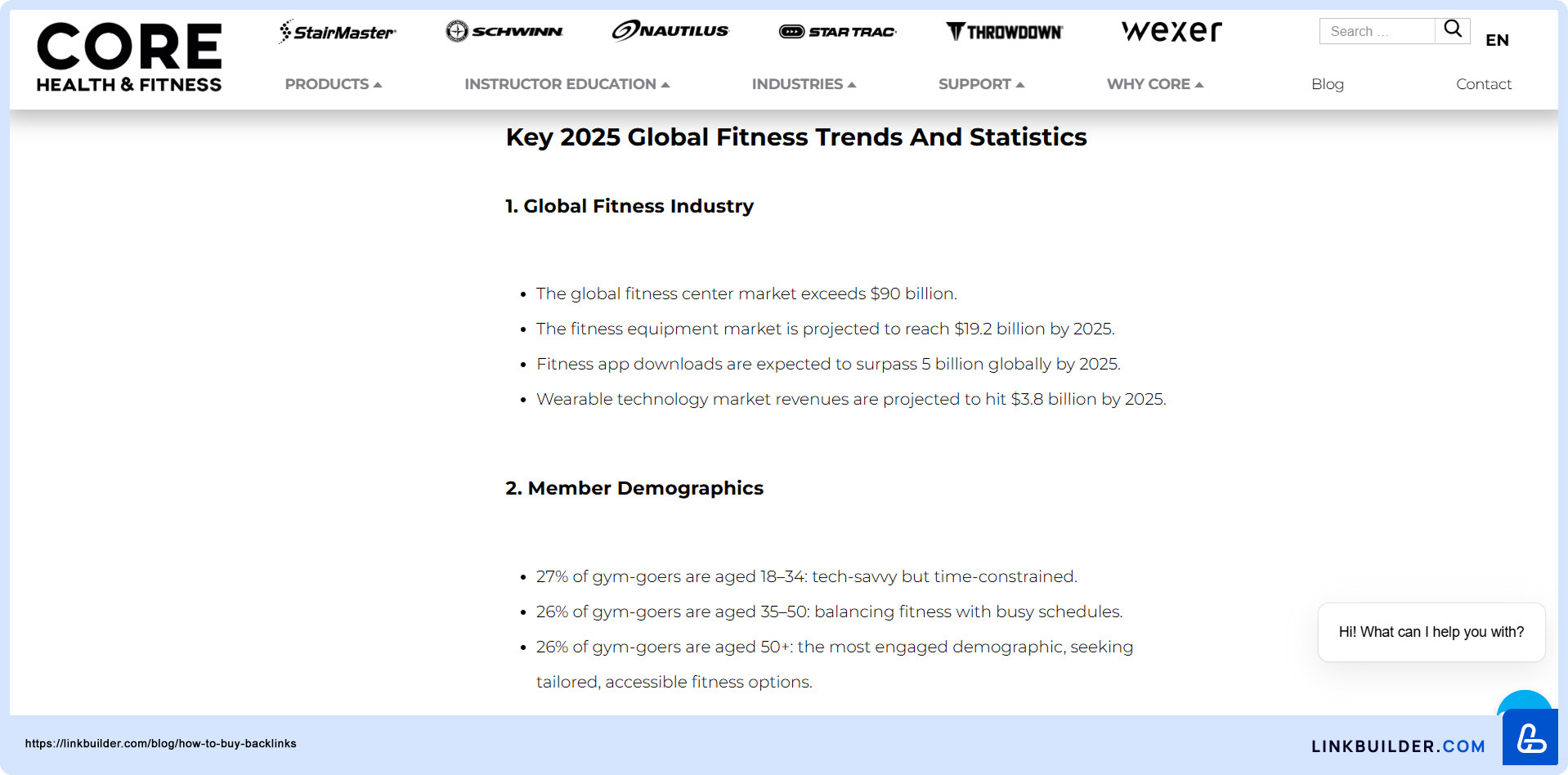
- Comprehensive How-To Guides:
Case Example: A tech company publishing "IT Strategy Examples: A Comprehensive Guide with Real-Life Cases and How To's," earning backlinks from IT blogs.
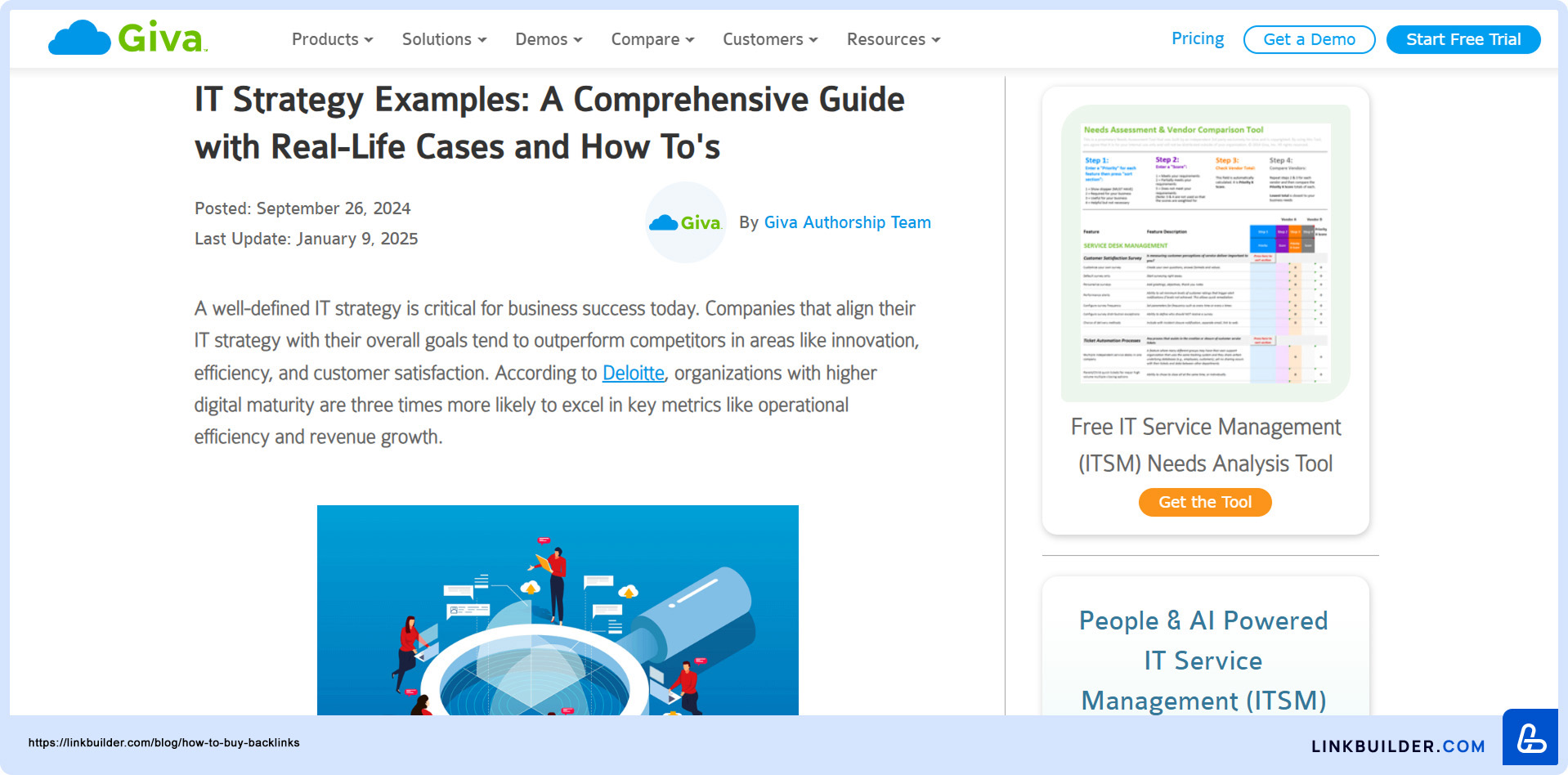
How to Identify Link-Worthy Topics:
- Use Ahrefs or SEMrush to analyze top-linked pages in your industry.
- Target keywords like "latest statistics," "industry report," or "market trends" that journalists search for.
- Keep content regularly updated to maintain long-term backlink value.
Businesses can passively attract organic backlinks over time by creating well-researched, authoritative content.
Pitching Expert Quotes for Backlinks
Journalists often seek expert opinions for their articles, and providing quotes can result in high-authority backlinks from major publications. Offering insightful, credible quotes can help brands establish themselves as thought leaders in their industries.
Where to Find Opportunities:
- HARO: Connects experts with journalists looking for quotes.
- Qwoted & Featured: Alternative platforms for sourcing media requests.
- Twitter's specialized hashtags: Many journalists post requests for expert insights.
- LinkedIn Groups & PR Networks: Some professional groups share journalist requests.
How to Pitch a Quote Successfully:
- Respond quickly to journalist requests with concise, insightful answers.
- Ensure your response adds unique value to the discussion.
- Provide a short bio and a link to your website.
- Avoid overly promotional pitches by focusing on providing helpful expertise.
Case Example: A nutritionist responding to a request about healthy eating trends could earn a backlink from a major health magazine.
Internal Linking & On-Page SEO
While external backlinks are essential, internal links help distribute link equity and improve website navigation. A strong internal linking strategy can enhance SEO performance and user experience.
Internal Linking Best Practices:
- Link to older blog posts to maintain their visibility.
- Make use of anchor text that accurately describes the content.
- Ensure key pages receive more internal links to strengthen their authority.
Case Example: A website could improve SEO by linking product pages to related blog articles, keeping visitors engaged longer. You can see an example of this in LinkBuilder.com’s blog post, Top 10 Best Forum Posting Platforms.
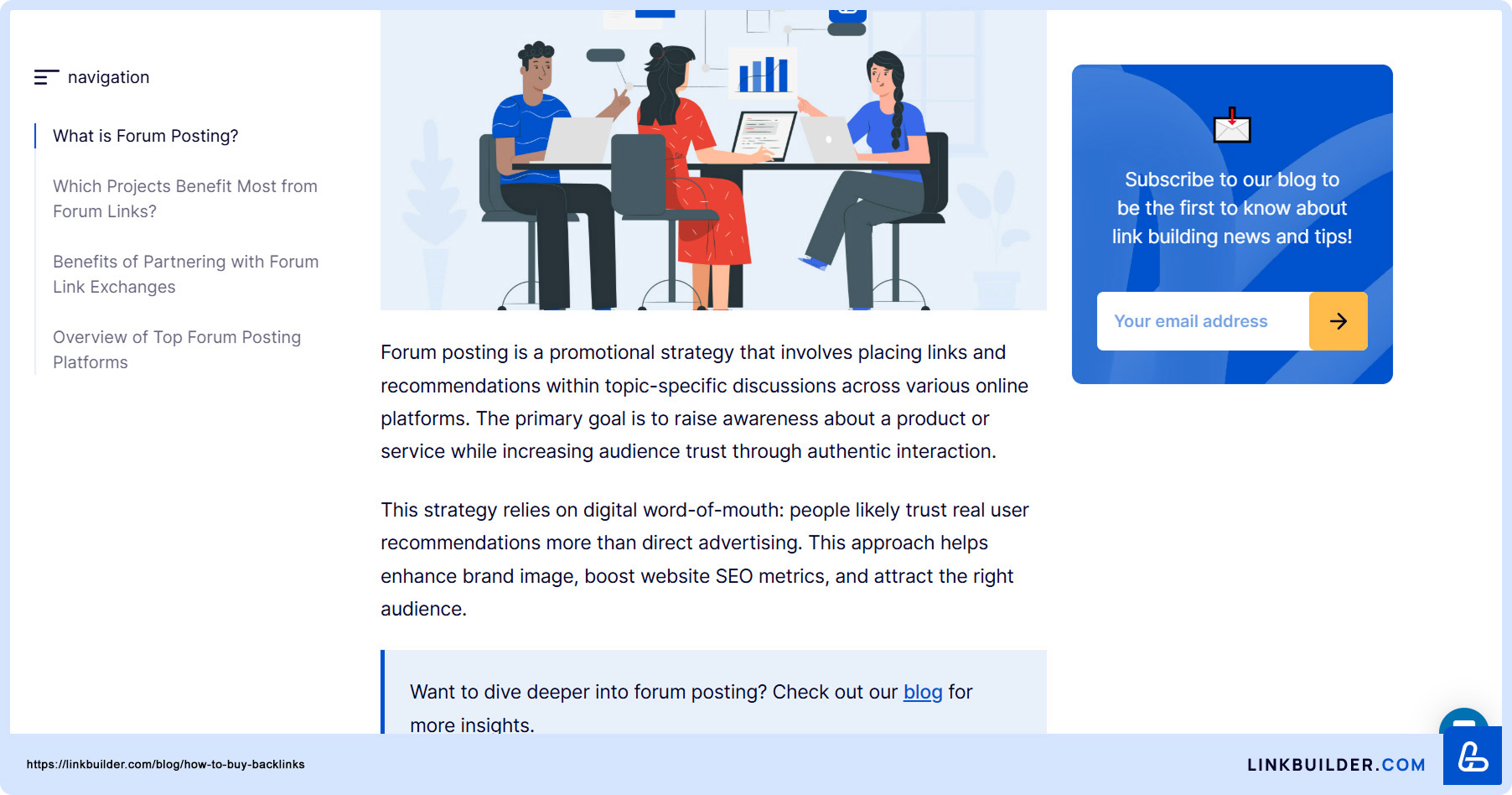
Future of Backlinks: Trends in 2026 & Beyond

Traditional link-building strategies that worked in the past may no longer be as effective as they used to be since search engines have become more advanced. AI advancements, changing ranking factors, and search engines' algorithms are shaping the future of backlinks.
Here's a look at the key trends that will define the future of link-building in 2026 and beyond.
AI's Role in SEO and Link Building
AI's Transformative Impact on SEO
Artificial intelligence is reshaping SEO by streamlining link-building and content optimization. AI-powered tools can analyze vast datasets at unprecedented speeds, enabling marketers to refine their strategies in real-time. These tools predict user behavior, uncover emerging link opportunities, and enhance backlink acquisition efficiency. Unlike traditional manual SEO approaches, AI-driven solutions assess competitor backlinks, detect patterns, and suggest high-value links, ensuring businesses focus on impactful efforts rather than low-return strategies.
Moreover, AI-powered analytics platforms evaluate link-building success by tracking referral traffic, domain authority, and relevance. Businesses can use this data-driven approach to optimize their strategies for maximum return on investment.
AI-Powered Content Strategies
One of AI's most significant contributions to SEO is predictive content generation. AI can analyze search trends, keywords, and user preferences to identify high-performing topics and formats. Machine learning models assess the semantic structure of top-ranking content, offering suggestions for optimal organization, headings, and discussion points that resonate with audiences.
Additionally, AI enhances content personalization by tailoring articles to specific audience segments. This targeted approach improves engagement and increases the likelihood of earning organic backlinks from authoritative sources. By leveraging AI for both link-building and content creation, websites can stand out in the competitive digital landscape, ensuring sustainable online visibility and growth.
Smarter Link Building with AI
AI-driven tools streamline the link-building process by:
- Identifying high-quality backlink opportunities: AI analyzes backlink profiles, competitor strategies, and industry trends to find the most valuable linking domains.
- Automating personalized outreach: AI-generated email templates can craft tailored messages that increase response rates from potential link partners.
- Monitoring brand mentions in real-time: AI tools track brand mentions across the web, allowing businesses to convert unlinked mentions into authoritative backlinks.
- Evaluating backlink quality: AI assesses the relevance, domain authority, and contextual placement of backlinks to ensure optimal SEO impact.
The Rise of Brand Mentions as a Ranking Factor
Google's search algorithms increasingly recognize brand mentions as a key ranking signal. While backlinks remain an influential ranking factor, search engines now consider how frequently a brand is mentioned across the web, even if no direct hyperlink is included.
How Brand Mentions Influence SEO?
Brand mentions contributing to SEO in several ways:
- Establishing credibility and authority: When reputable websites reference a brand in their content, search engines interpret it as a sign of trustworthiness.
- Enhancing topic relevance: Search engines use natural language processing (NLP) to understand the context of brand mentions and their association with specific keywords.
- Boosting engagement and brand awareness: Frequent mentions across various platforms increase brand visibility, driving more organic traffic and potential backlinks.
How to Leverage Brand Mentions?
To capitalize on brand mentions as a ranking factor, businesses should:
- Encourage online discussions: Engaging in industry conversations, guest blogging, and social media interactions increases brand exposure.
- Monitor and respond to mentions: AI-powered tools like Google Alerts and Brand24 can help track brand mentions and enable businesses to interact with potential link sources.
- Convert unlinked mentions into backlinks: Reaching out to website owners and requesting a backlink where a brand is already mentioned can be an effective strategy.
- Focus on PR and media outreach: Building relationships with journalists and influencers increases the likelihood of earning brand mentions on high-authority sites.
Predictions for Google's Future Updates
Search engine algorithms continuously improve to provide better user experiences and combat spammy SEO practices. Looking ahead to 2026 and beyond, Google is expected to implement several key changes impacting backlink strategies.
- More Emphasis on Link Relevance Over Authority
Recently, high domain authority (DA) was a primary factor in determining backlink value. However, Google is shifting its focus toward link relevance, ensuring that backlinks come from contextually related sources rather than just high-authority domains.
For example, a backlink from a niche-specific blog with moderate DA may be more valuable than a high-DA backlink from an unrelated website. This shift reinforces the importance of earning links from industry-relevant sources rather than pursuing authority metrics alone.
- AI-Driven Ranking Adjustments to Combat Manipulation
Google's AI-powered ranking systems are becoming more sophisticated in detecting and neutralizing SEO manipulation. Future updates will likely:
- Prioritize user experience over technical SEO tricks: Websites that prioritize content quality, user engagement, and organic credibility will outperform those that rely on outdated SEO hacks.
- Enhance contextual understanding of links: Google's algorithms will better analyze the content surrounding backlinks to determine their legitimacy.
- Use AI-driven pattern recognition to detect unnatural link patterns: AI will identify and penalize suspicious link-building tactics, such as rapid link acquisition or other black hat link schemes.
To stay ahead, brands must adopt a long-term, content-driven approach to SEO rather than chasing short-term ranking gains through artificial link-building tactics.
Is Buying Backlinks Worth It in 2026?
Ultimately, SEO in 2026 will reward authenticity. To maintain strong search rankings, businesses must focus on long-term engagement, audience trust, and meaningful connections.
In the past, link-buying was often associated with spammy tactics like mass link farms and irrelevant placements. Now, sites like LinkBuilder.com, which practice ethical link-building, exist to provide high-quality, contextual links that meet the highest standards in the industry. This shift allows companies to buy paid links without risking their rankings or credibility.
SEO in 2026 requires a balanced approach to achieve beneficial results. A well-balanced backlink strategy combines organic growth with strategic paid placements and can help businesses build a strong, penalty-free backlink profile and maintain competitive search rankings.

